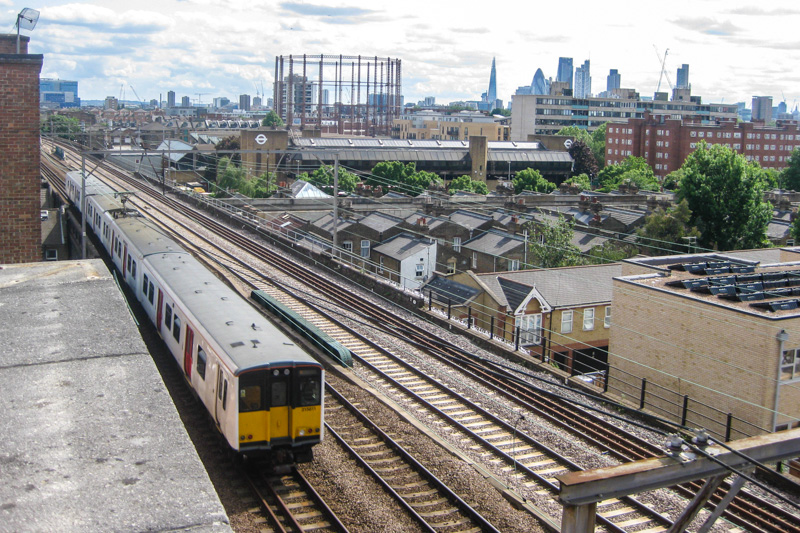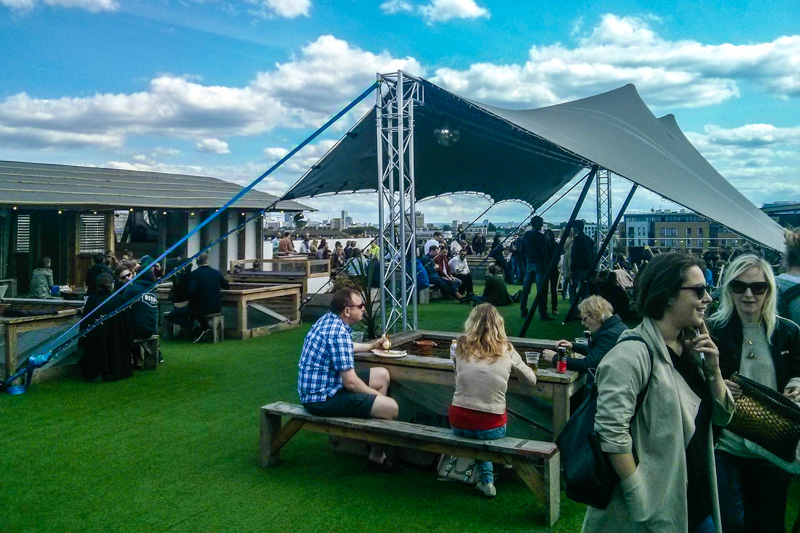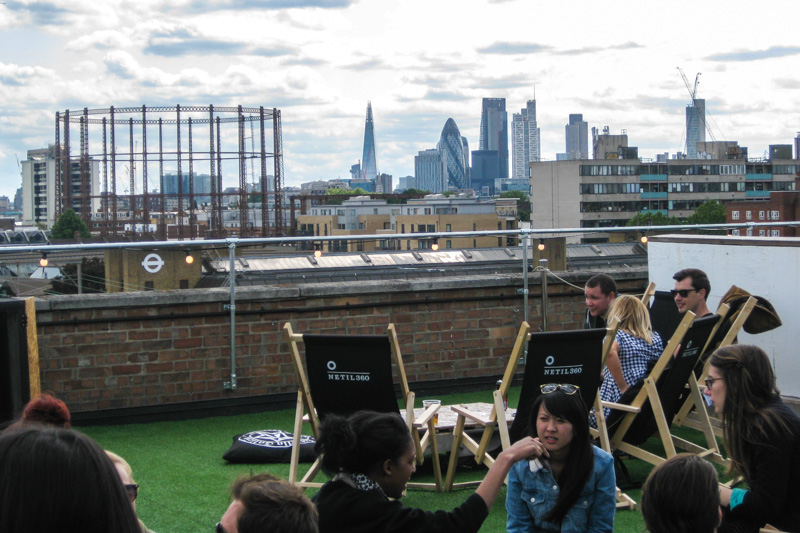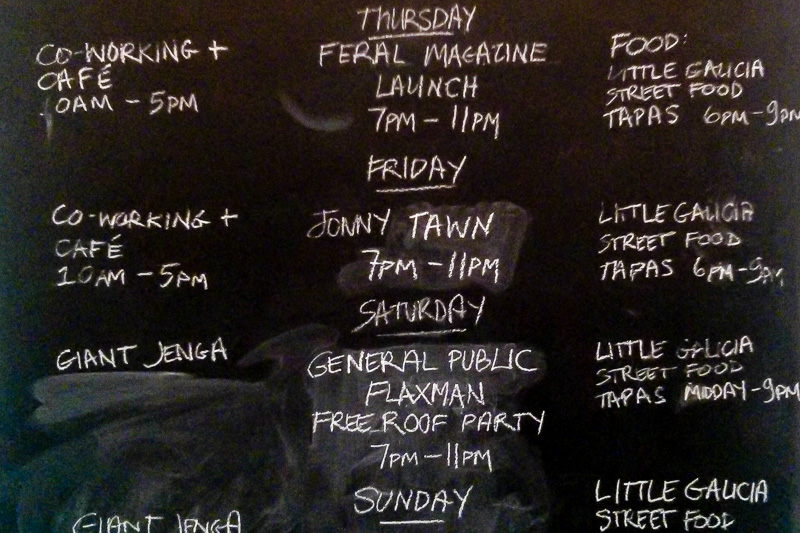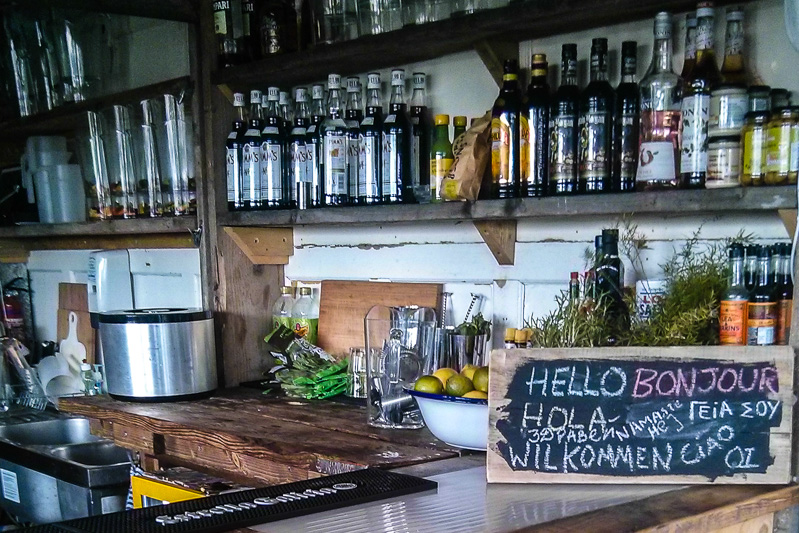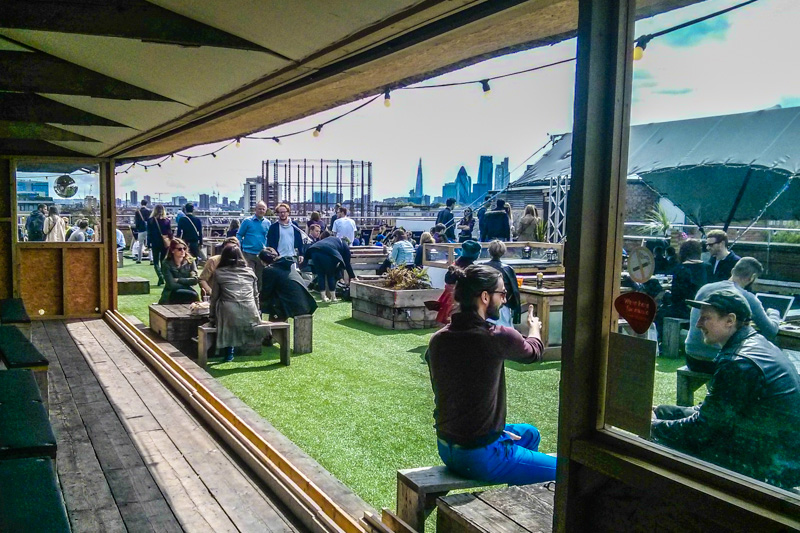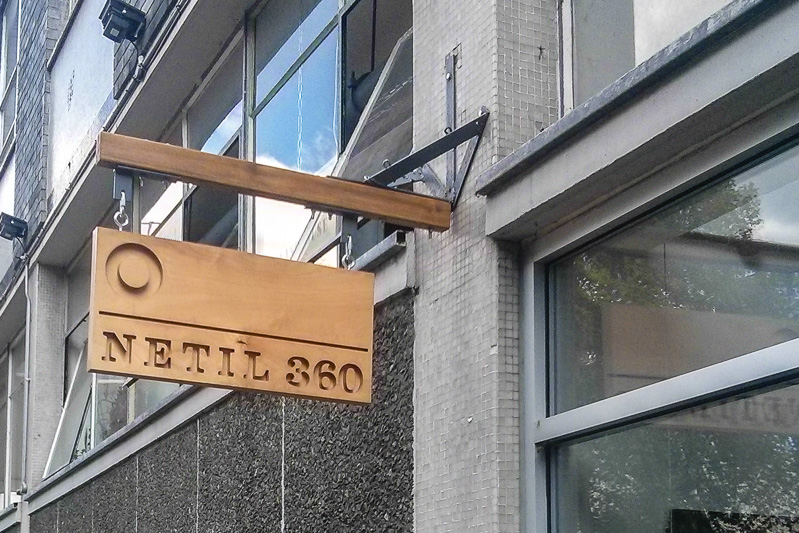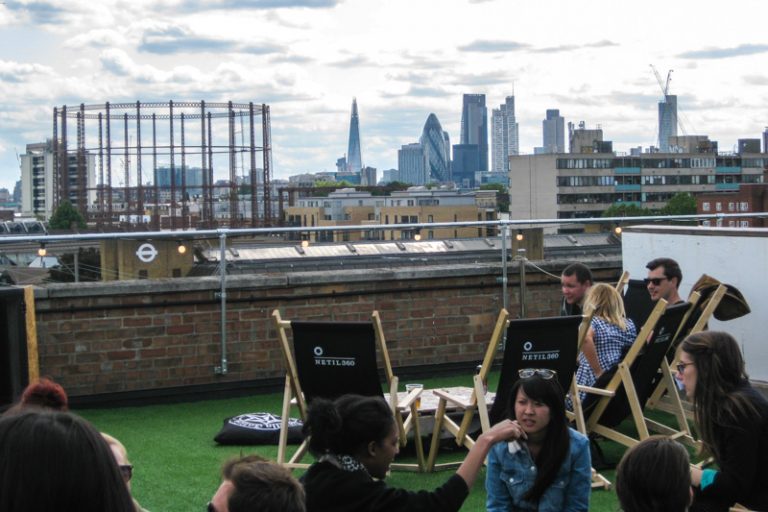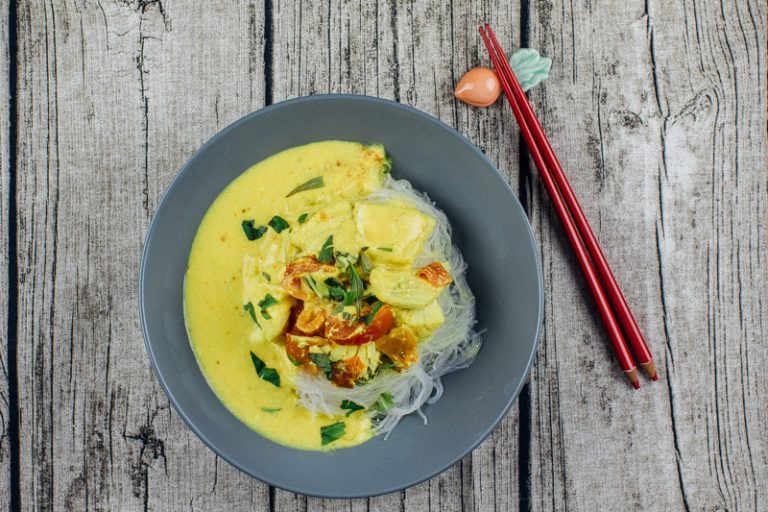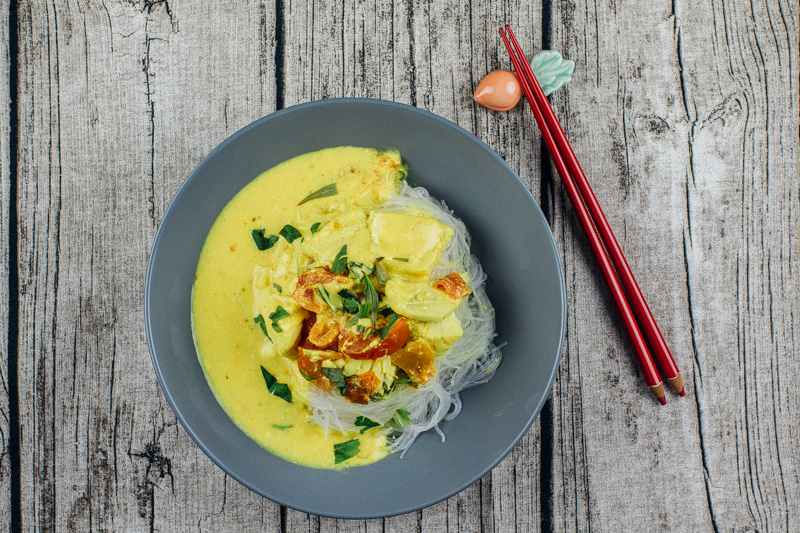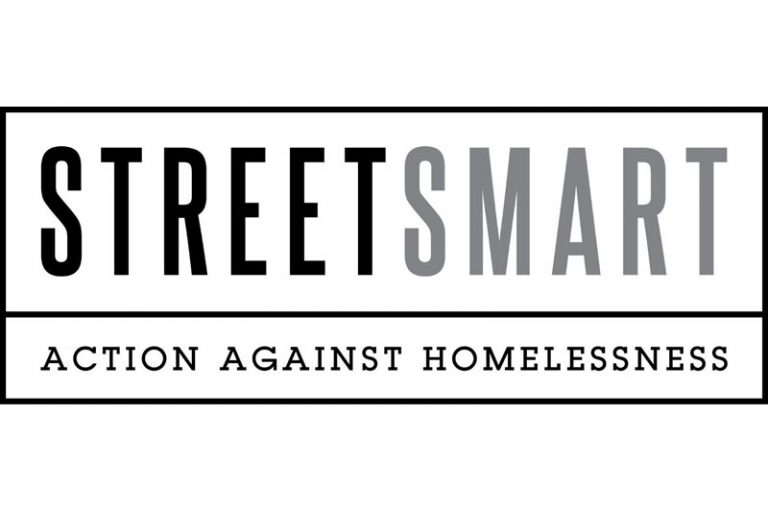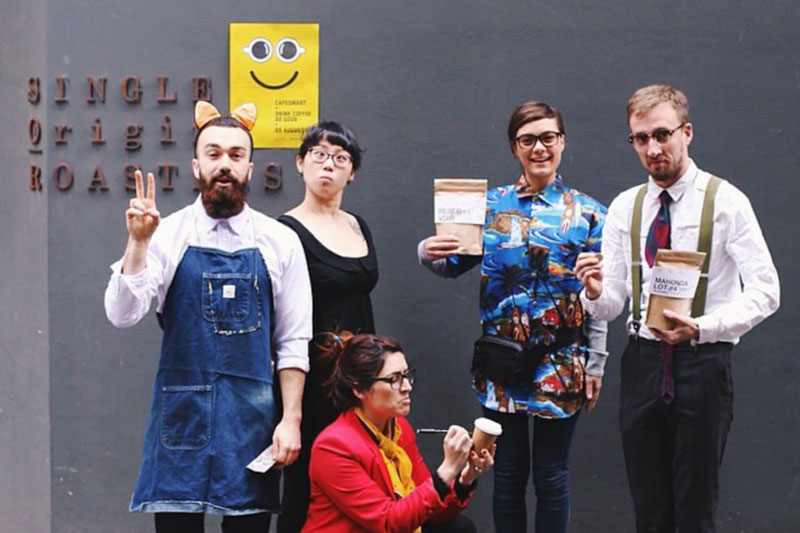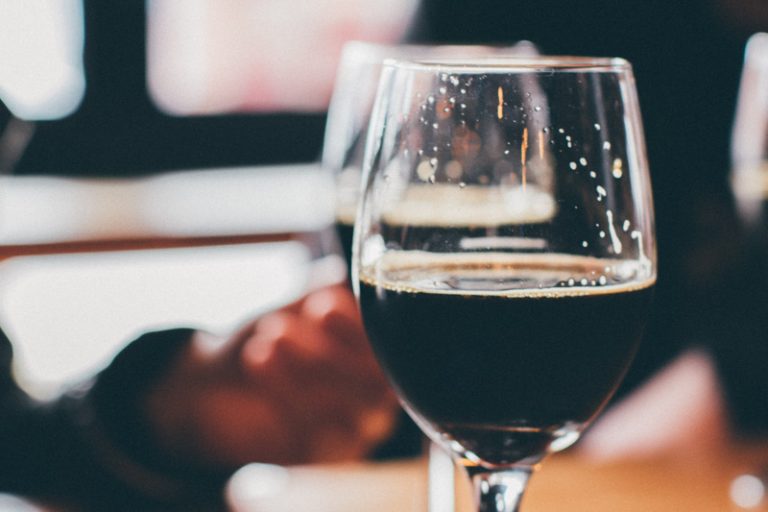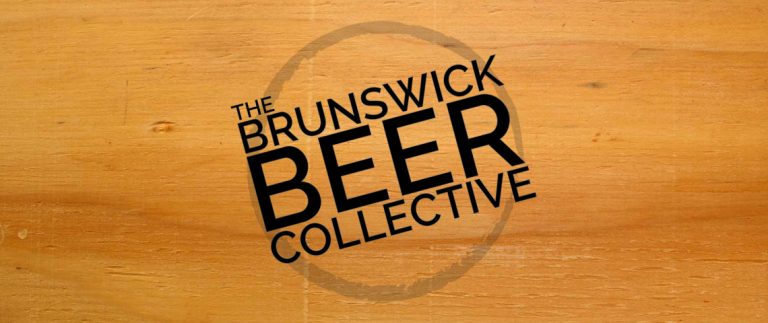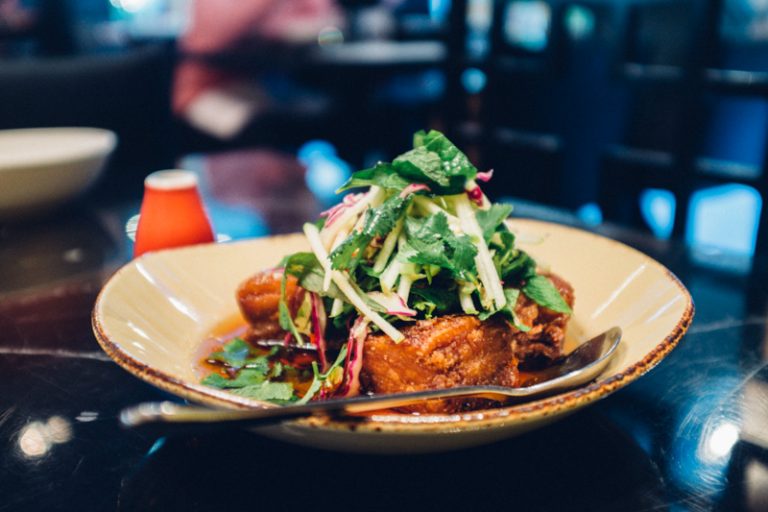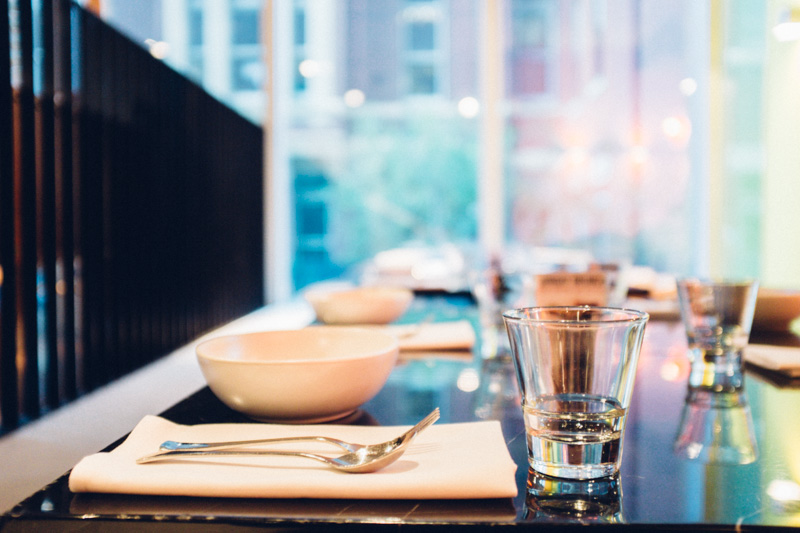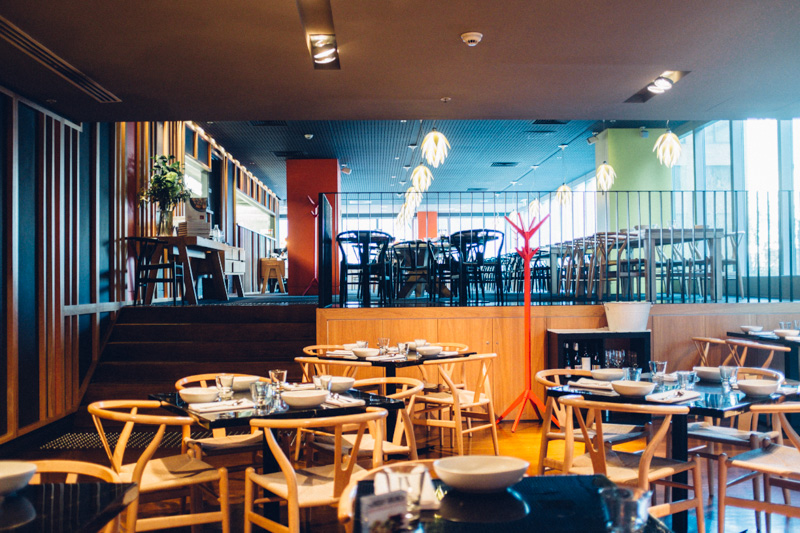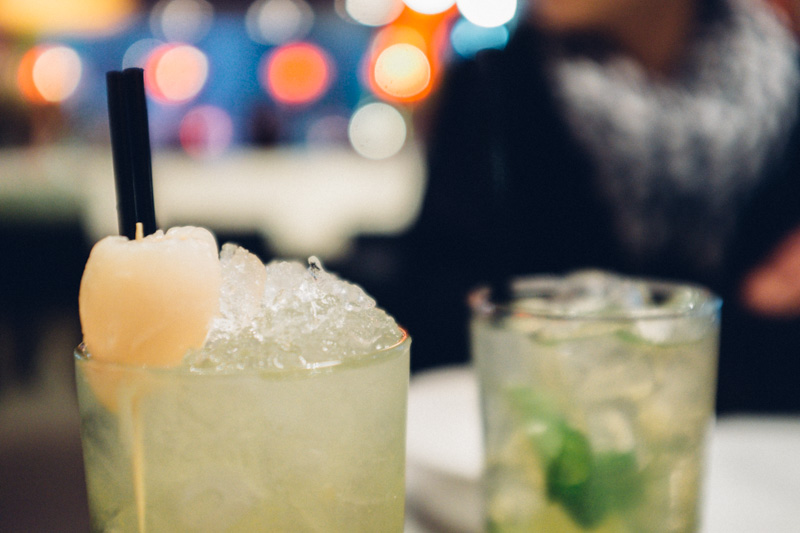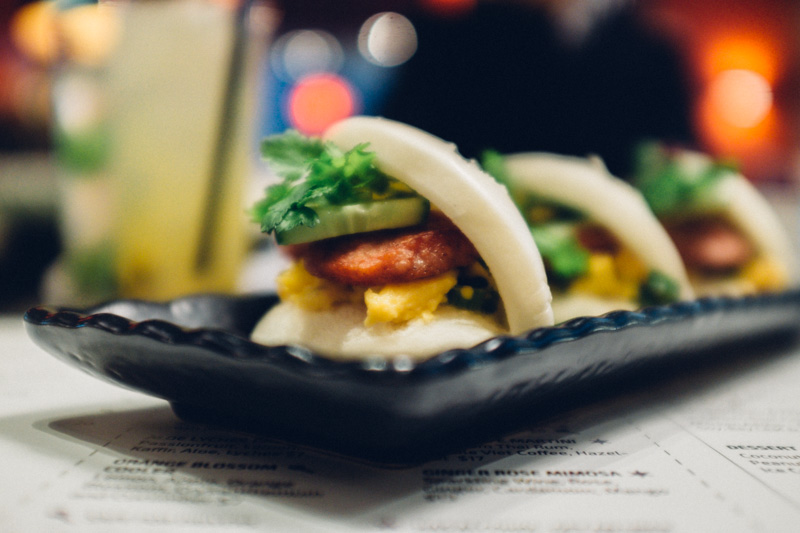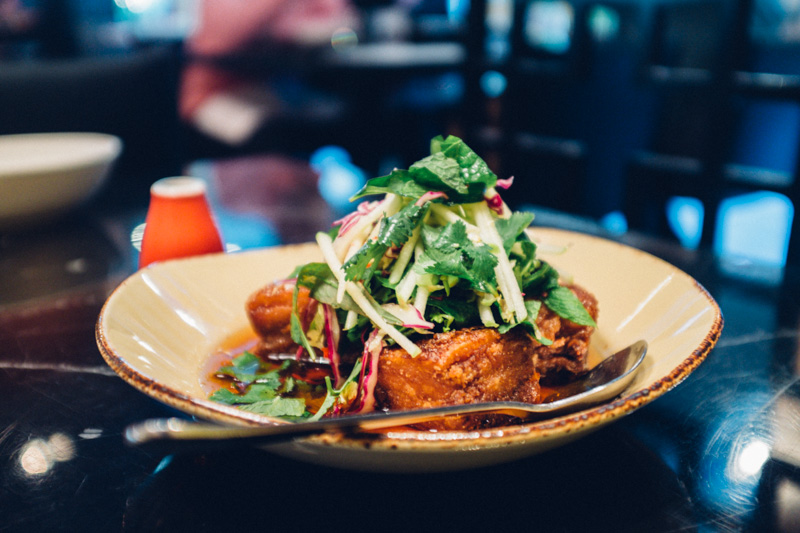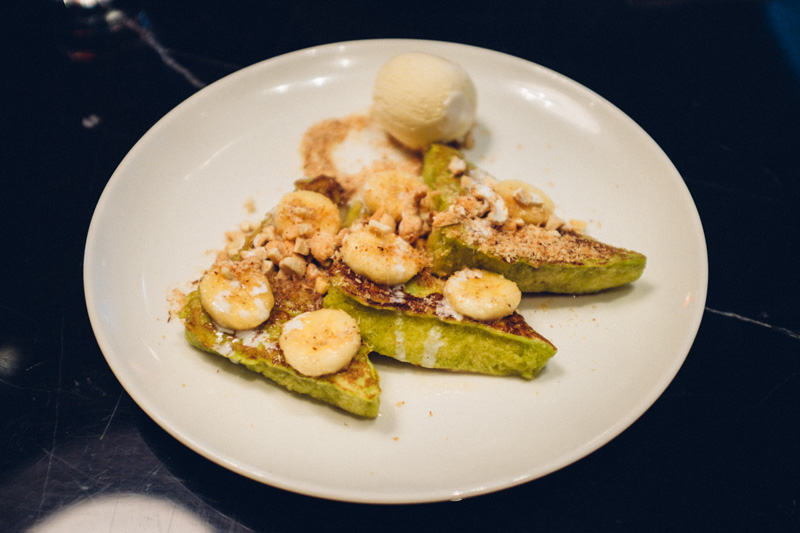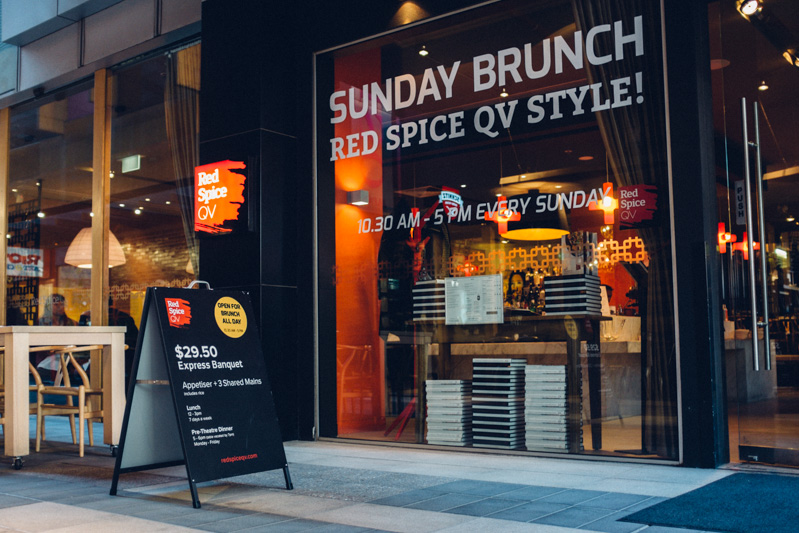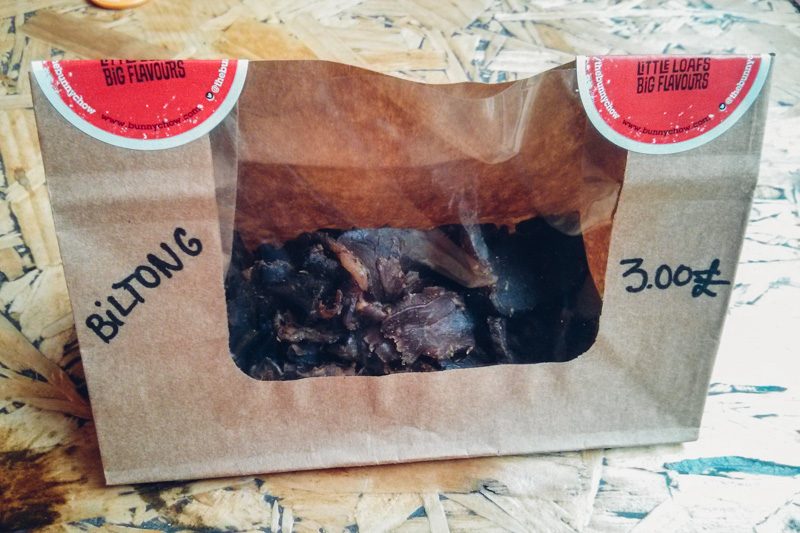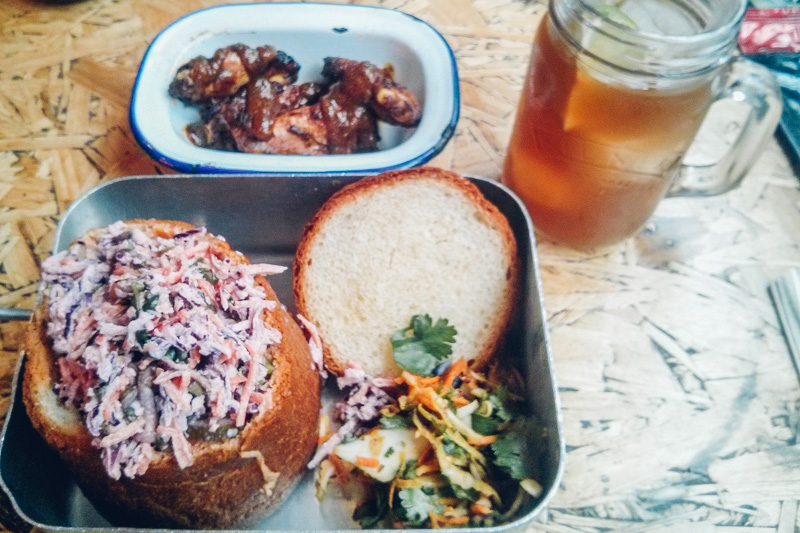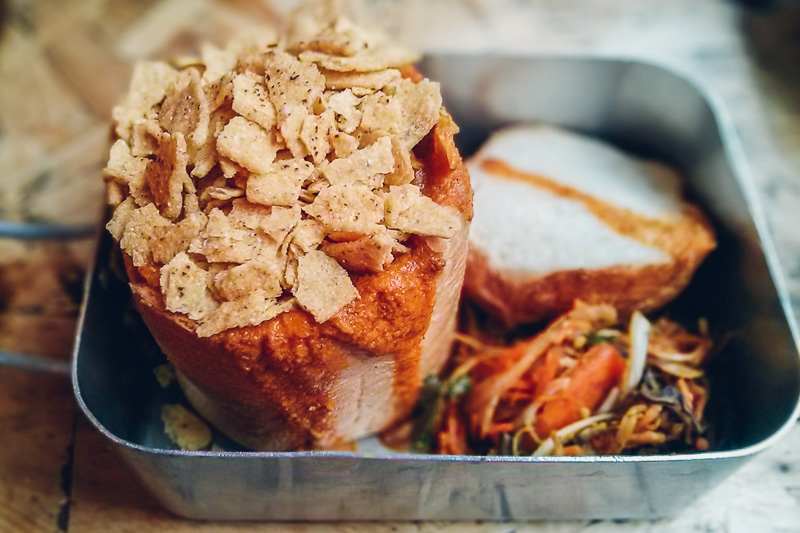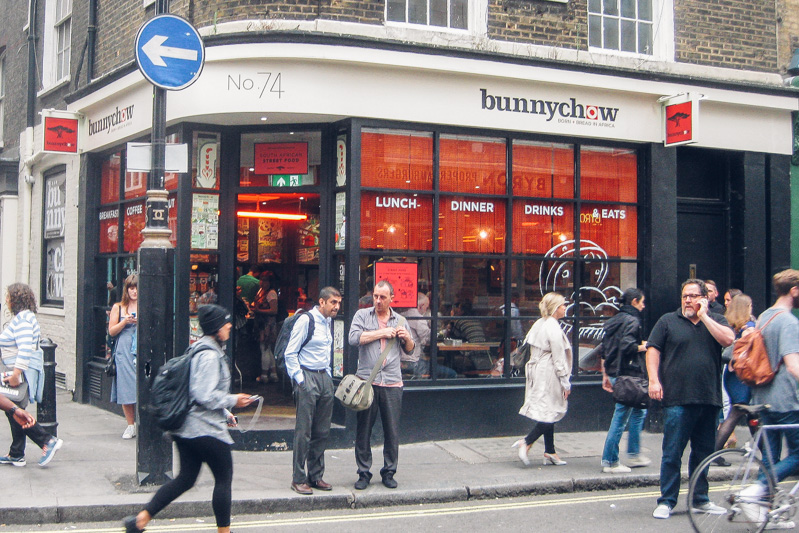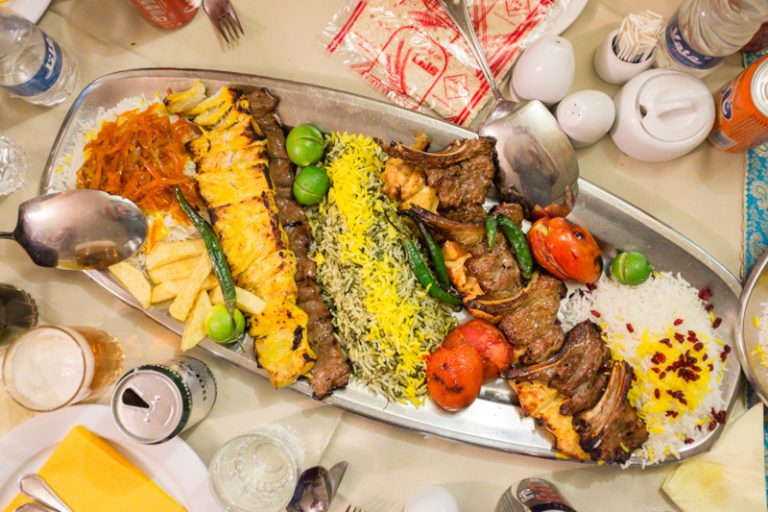TEHRAN | Tehran, Iran. What did I know about this city, or indeed this country’s food before I arrived? The honest answer is not that much. When I lived in London there was an Iranian sweet shop in West Kensington that I’d visited a few times so I knew that the desserts involved lots of biscuits, cakes and sweet, syrupy creations, and surprisingly less nuts than one would assume. On the savoury front, owing to the fact of its position in the world, I knew that it was a safe bet to assume that there would be kebabs and grilled meats on the menu. Yoghurt, dips and flat bread, and of course, the famous Persian saffron rice.
Unsurprisingly, given the lack of international tourism to Iran over the past few decades, there’s not that much in the way of useful information on where to eat in Tehran. TripAdvisor and Lonely Planet are resources that come up a lot however as with every other city in the world, these aren’t exactly full of the best tips going around. Indeed our Lonely Planet guide to Iran, despite being the most up-to date version, was full of incorrect and outdated information, regarding not just food, but a variety of things.
What all of this meant is that I had to do a lot more research than usual to try and pinpoint any “must try” places and even then, I often came up short in my attempts. When I arrived in Tehran, I soon discovered that a lack of English signs on store fronts was going to make things even more difficult. So what then, did I have? A few places that my research had brought up (some which as it turned out were no longer open), my own instinct and sense of smell (always follow your nose and look for locals lining up for food) and our guide Vahid and friend Taraneh who were Iranian. Thankfully these 3 things combined meant that when the time came to get onto the bus and leave Tehran, I was able to leave satisfied, having eaten some amazing food during my stay.
This food guide is broken down into food types, and then places where you can find them. Where possible, exact addresses are provided, and where not, the street and nearest intersecting street will be listed to get you close to where you need to be. I hope you enjoy reading through my Tehran food guide and that it helps you enjoy some great food while in Tehran.
For tips on where to eat in Shiraz, check out my Shiraz Food Guide. For Esfahan food tips, visit my Esfahan Food Guide.
Buffets
I know what you’re thinking and I can assure you that I thought the same thing too when I went to my first buffet in Tehran. The thing about Iran is that the word buffet isn’t instantly synonymous with terrible. The reason for this is because the kind of food served at the buffets lends itself to this style of serving and, at the popular buffets, the food rotates fast so you don’t get the situation where there’s been food sitting in a bain-marie for ages. Quite often, you’ll have a salad bar scenario where the salads are at a buffet and the meat is cooked to order, which to my mind is what you want to be looking out for.
Buffets are popular with locals for family dinners on special occasions. It provides people with an opportunity to eat some of the foods that they wouldn’t get an opportunity to make at home due to implacability. I.e. not everyone in Iran has access to a big, proper charcoal BBQ with which to properly cook kebabs. Below are some of the common dishes you’ll find at a buffet in Iran.
Salad
A plate containing some of the usual types of salad you’ll find at an Iranian buffet. There’s nothing unrecognisable here – a fresh cucumber, tomato and white cheese salad, olives, pickles, pasta salad, corn and yoghurt.
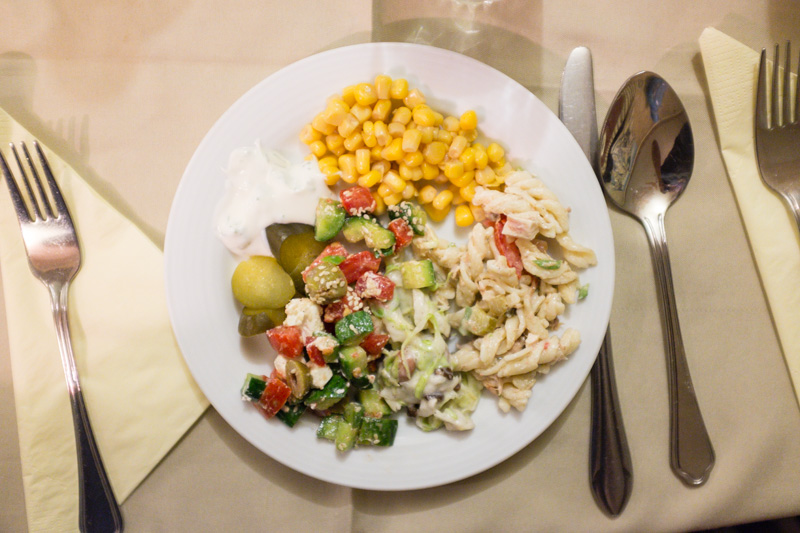
Chelo Kebab
As described earlier, the salad at these places will usually be buffet style. If you see the meat in the buffet too you’ll want to be avoiding it as all the good places cook their meat (and sometimes rice) to order. Chelo kebab consists of steamed rice (chelo) and kebab (skewered meat that’s been grilled over hot charcoal), with grilled tomatoes (and sometimes grilled peppers) and buttery rice. There are several types of kebabs which are commonly served these include:
- Kabab Barg (lamb, chicken or beef fillet)
- Kabab Koobideh or Kubideh (minced lamb, beef, or chicken, often mixed with parsley and chopped onions.)
- Joojeh Kabab (chicken marinated in minced onion, lemon juice and saffron)
- Kabab Chenjeh (lamb chop)
- Mahi Kabab (white fish)
Persian rice is famous around the world. It’s a very long grain basmati rice which is highly aromatic. It’s fluffy texture comes from the fact that steaming is part of the process which ensures that each grain is separate from the others. Common rice dishes served with Chelow Kebab include:
- Chelo (white rice topped with a bit of saffron rice and barberries. Similar to pilaf)
- Adass Polo (white rice cooked simultaneously with lima beans, dill and garlic)
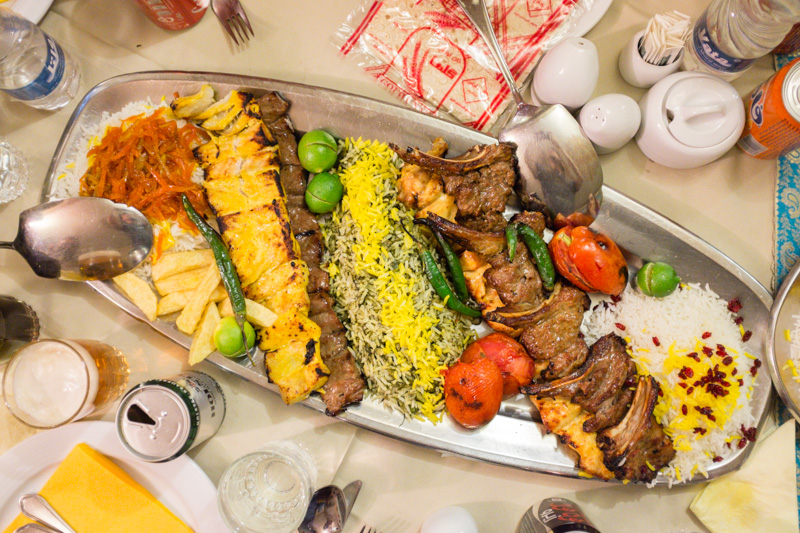
2 traditional buffets worth trying in Tehran are Restaurant Alighapoo and Ferdowsi Grand Hotel‘s Traditional Restaurant.
Restaurant Alighapoo
Restaurant Alighapoo is in the basements level of a building that you can’t miss from the street. Keep your eye out for the flame candle and this stylish guy. It’s a busy spot with a mixture of locals and tourists and is elaborately fit out with live music to keep the night going.

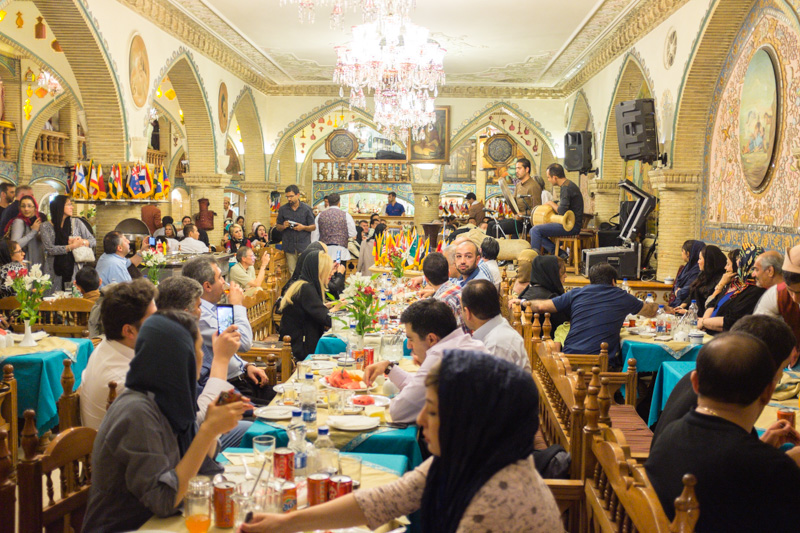
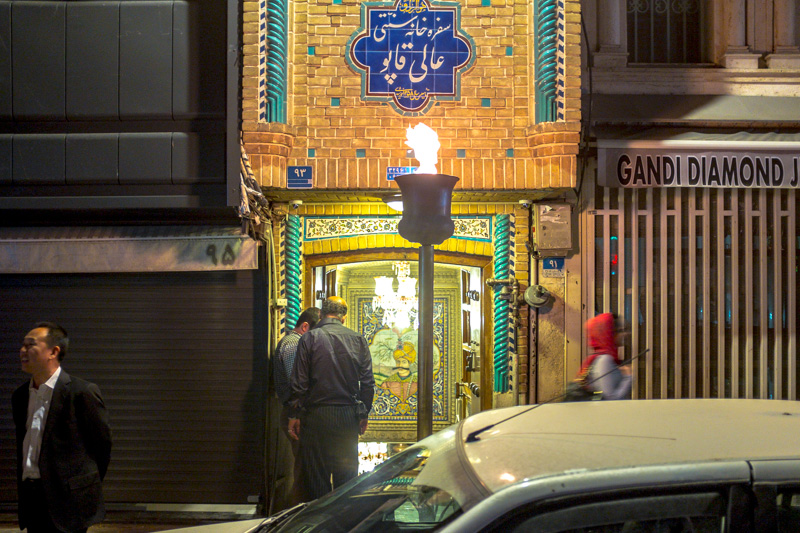
Restaurant Alighapoo
93 Gandhi Street
Tehran
Ferdowsi Grand Hotel Traditional Restaurant
There are several restaurants in the Ferdowsi Grand Hotel, plus a highly regarded cake shop. The traditional restaurant can be located by going down the stairs at the side entrance to the hotel.
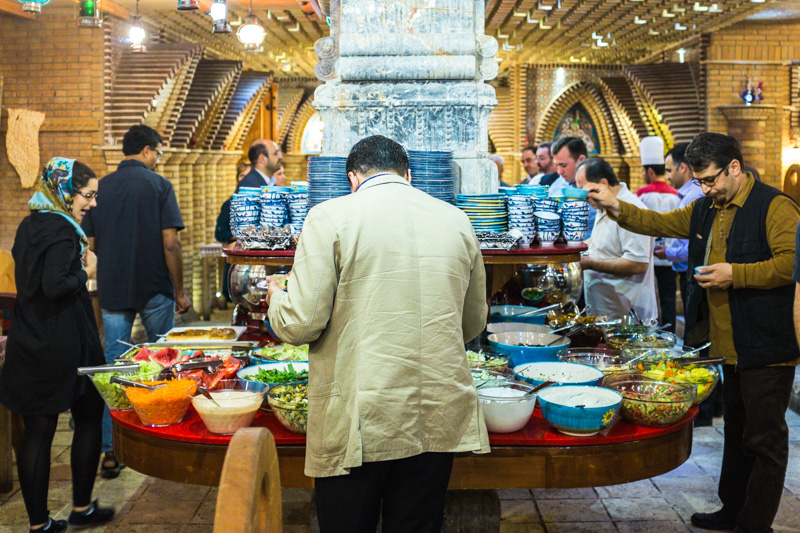
Not uncommon in traditional restaurants like this, are live bands playing traditional Persian music.
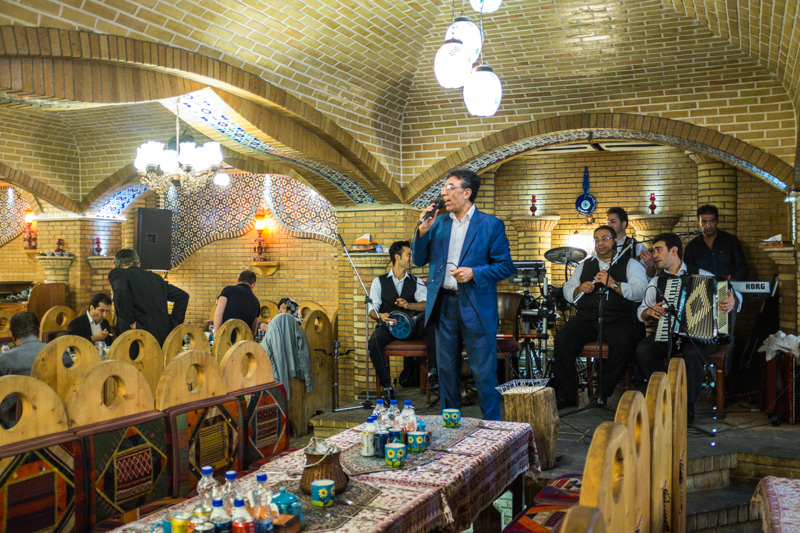
The meat at Ferdowsi Grand Hotel wasn’t cooked to order but was being rotated with regularity. While not the best kebab that we tried in Iran, it was perfectly acceptable.
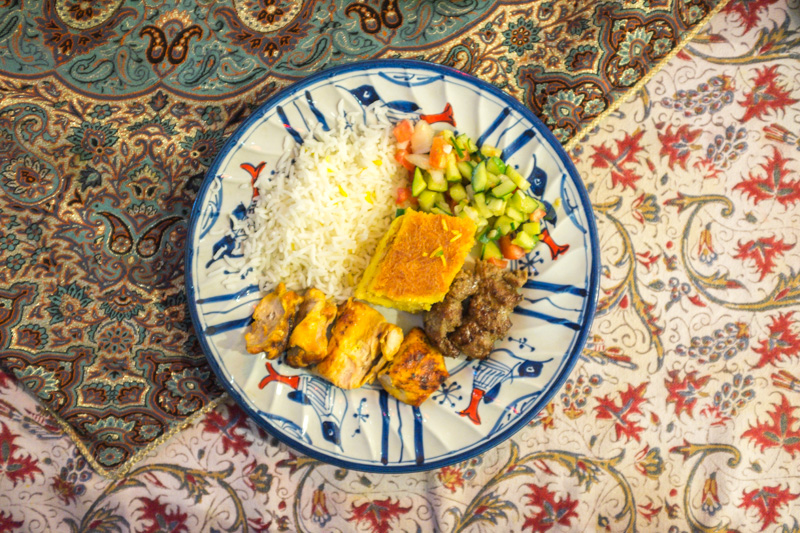
The wood fired pita, on the other hand, was coming out fresh throughout the lunch service.
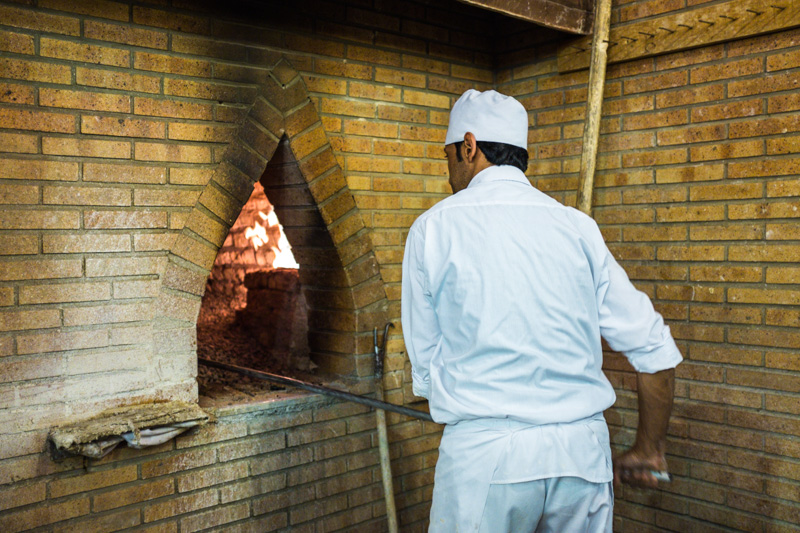

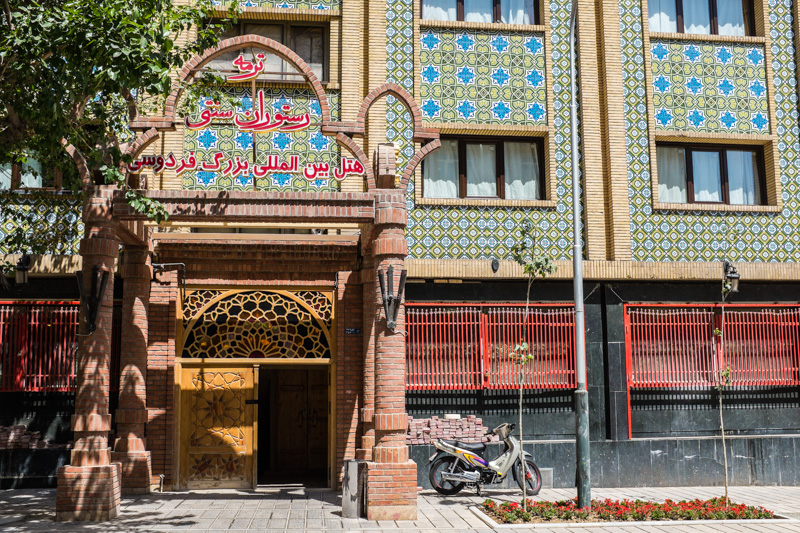
Ferdowsi Grand Hotel Traditional Restaurant
20 Kushk e-Mesri Street
Tehran
Tahchin
Tachin (or Tah chin, or Tacheen) consists of rice which is partly cooked with saffron, egg yolk and yoghurt. It’s then layered in a dish with chicken or lamb, baked and turned. It’s utterly delicious and the crisp, crunchy layer at the top is particularly good, so good in fact that it has its own name – tahdig.
Moslem Restaurant
One of the best places to try tahchin is Moslem Restaurant in Tehran’s Grand Bazaar. These guys are very popular. The place occupies 4 levels and each one is packed, along with a line for takeaway. Word is that they serve between 4,000 – 5,000 customers a day and once you’ve tried the food you’ll see why. While a variety of dishes are offered at the restaurant, a quick glance at the tables makes it clear that tahchin is what you need to be ordering here. The tahchin at Moslem isn’t cooked with meat, but rather it’s served atop a very generous piece of barbecued chicken. A word of warning, one portion will easily serve two people.
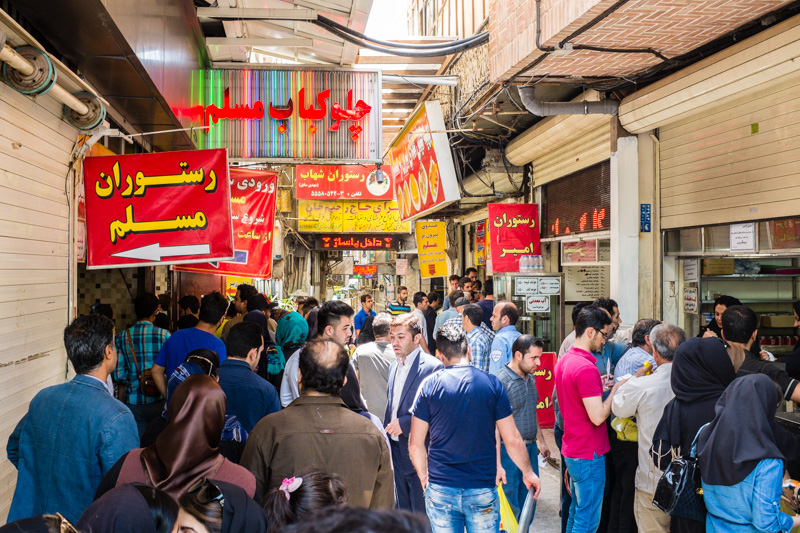
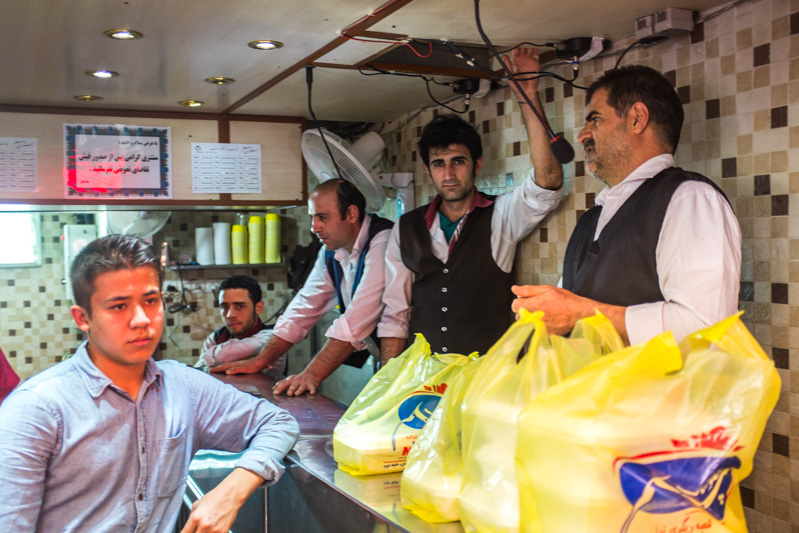
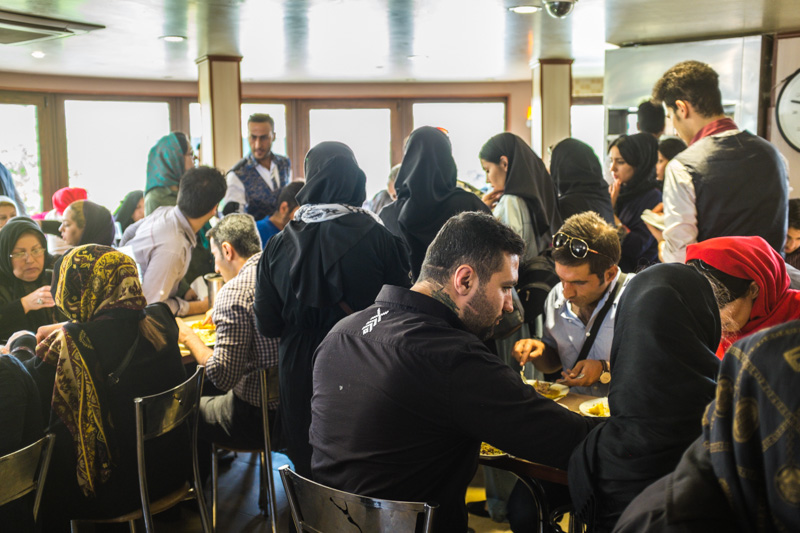
Doogh is a savoury yoghurt based drink seasoned with mint and sometimes salt. It’s very refreshing and can be found throughout Iran.
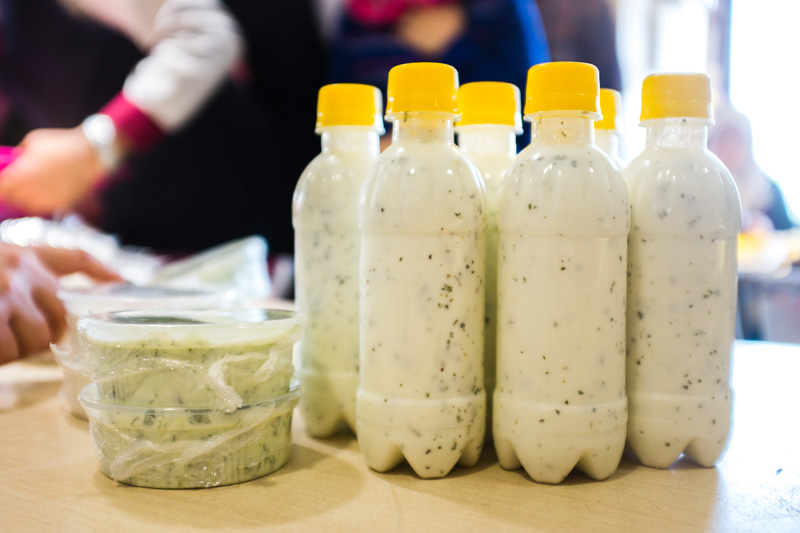
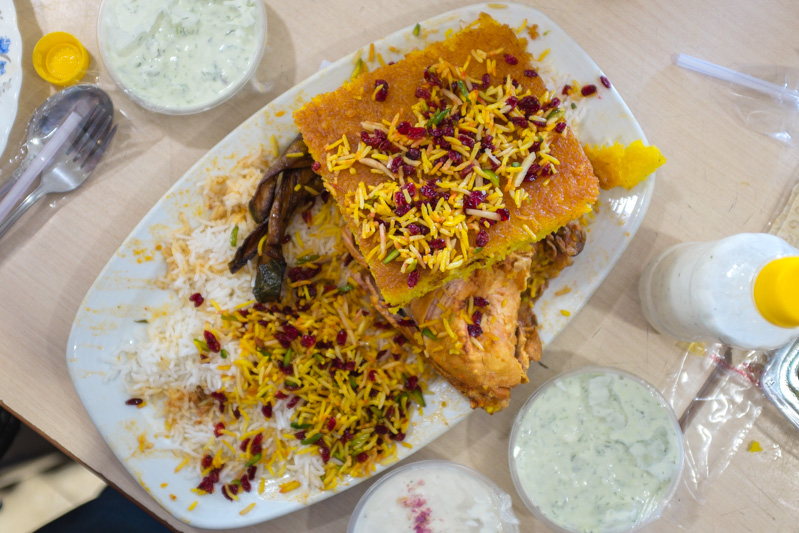
Moslem Restaurant
Panzdah-e-Khordad Street (near the entrance to the Sabze Meydan Bazaar)
Tehran
Cafes
Cafes that would be instantly recognisable to any Westerner can be found throughout the major cities in Iran. Just like any other cafe, a variety of drinks and cakes are offered.
Elysee
One cafe that we visited was located atop a modern shopping mall in North Tehran and had amazing views across the city. My drink of choice, a Kit Kat and peanut butter milkshake. Yum. The mocktails were quite decent too. Elysee is also a restaurant that serves a variety of non-Iranian food (steaks, Italian, Mexican etc), but stick to the cakes and drinks.
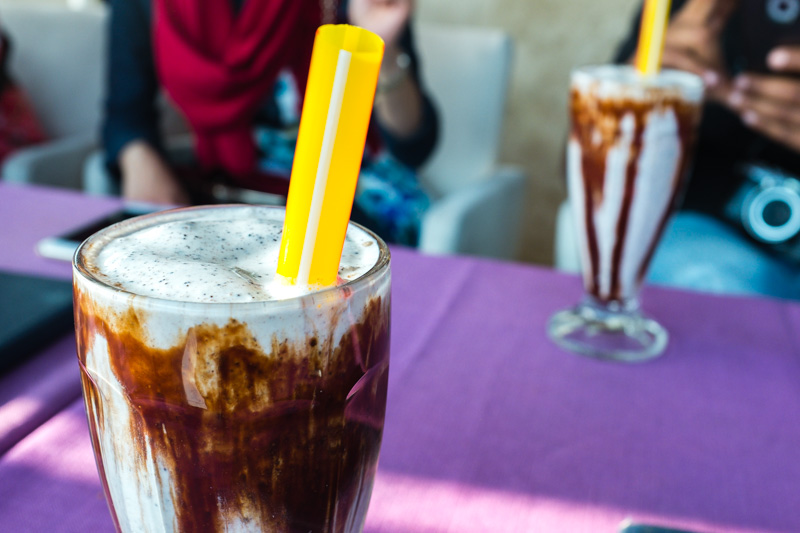
Elysee
Tandis Center
Fana Khosrow Street
Tehran
Tea
Alcohol might be banned in Iran but you’ll have no trouble finding hot tea, which is served with practically every meal you eat. It’s served without milk, and generally comes with a choice of either white sugar cubes or saffron sugar crystals on a stick. I’ve not listed any specific places from which to get tea as it’s everywhere.
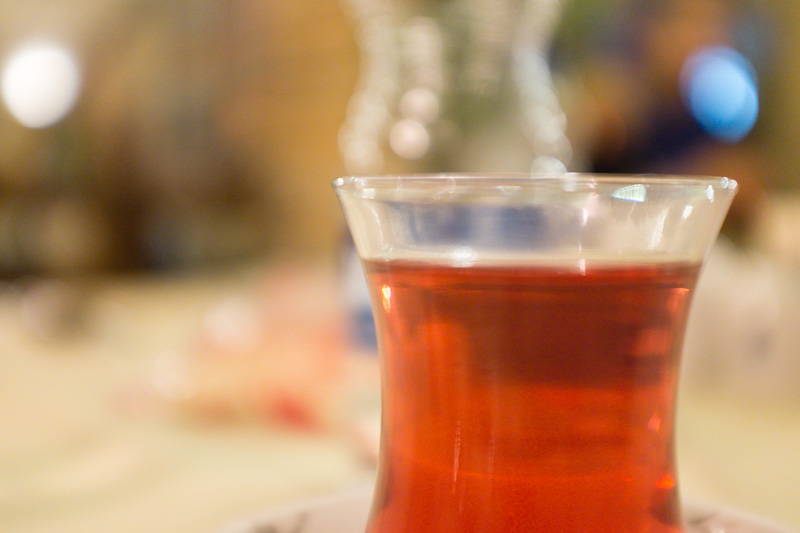
Alcohol
Alcohol is, of course banned in Iran. What you will see in every drinks fridge in cafes and restaurants across the country are non-alcoholic malt beverages. Popular brands include Istak, Delstar, Hey Day and Shams. The original flavours are pretty bad tasting however the fruit flavoured options, such as lemon, peach and tropical are actually quite tasty, although they have more in common with soda rather than beer. The bottles/cans and labels certainly look like beer, but beer this is not.
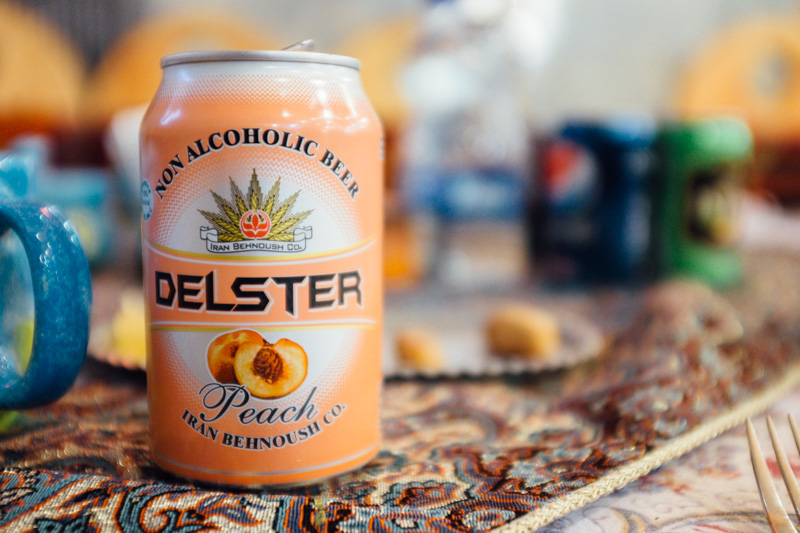
Street Food
One thing that surprised me about Iran in general was that there wasn’t a street food culture as such. Yes there are a variety of hole in the wall places selling food but the street food culture seemed more akin to what you’d find the Western world. While picnicking seemed like it was a national pass-time, with families out and about enjoying picnics well into the evening every night of the week, it was home cooked food that was the star. It’s nothing like the street food culture in Asia for example.
Saying this, there were a variety of casual food options that were on offer.
Roast Chicken
Roast chicken was plentiful – I haven’t seen roast chicken like this with such frequency on the streets since I was in France.
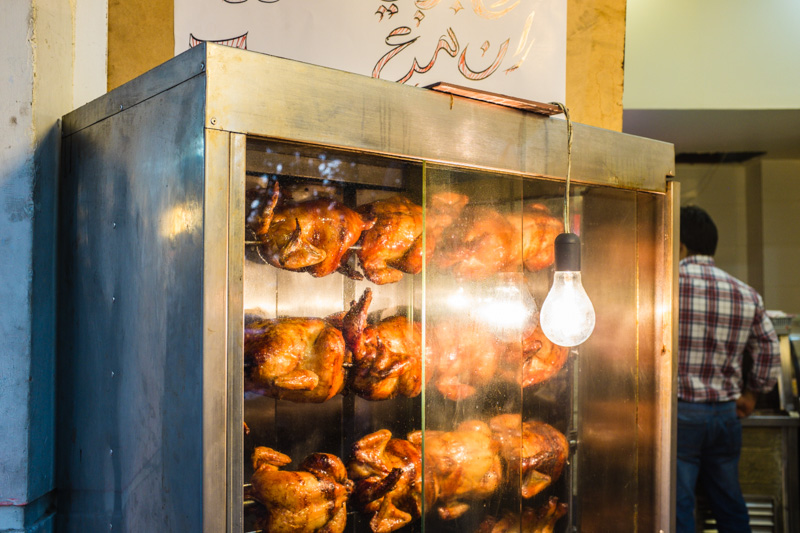
Roasted Corn
Corn on the cob being roasted over charcoal is very common in Iran. Walk through the streets of Tehran and it won’t be long until you see a corn vendor.
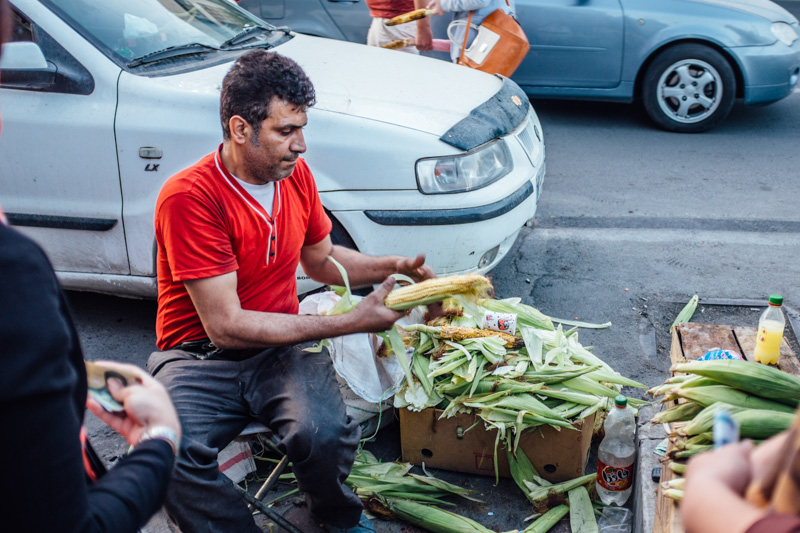
Preserved Fruit
Preserved fruit is very common in Iran too. Common fruits include peaches, apricots and berries and tastes range from sweet to sour. These vendors were located on the path up to Darband Mountain in North Tehran. There are a lot of restaurants, street food vendors and spots to smoke shisha located along the path and calmly flowing water up to the mountain.
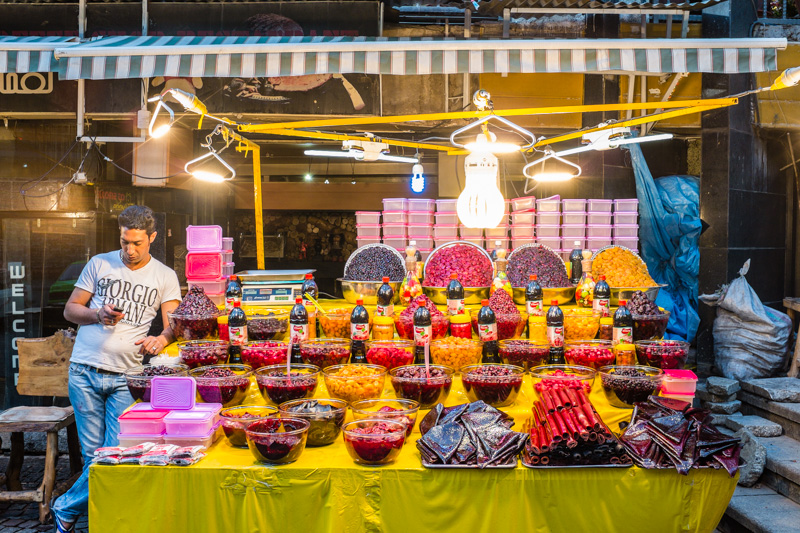
We tried a variety of fruits from this guy before buying a container full of the sour apricot. Very sour, but once you start you can’t stop.
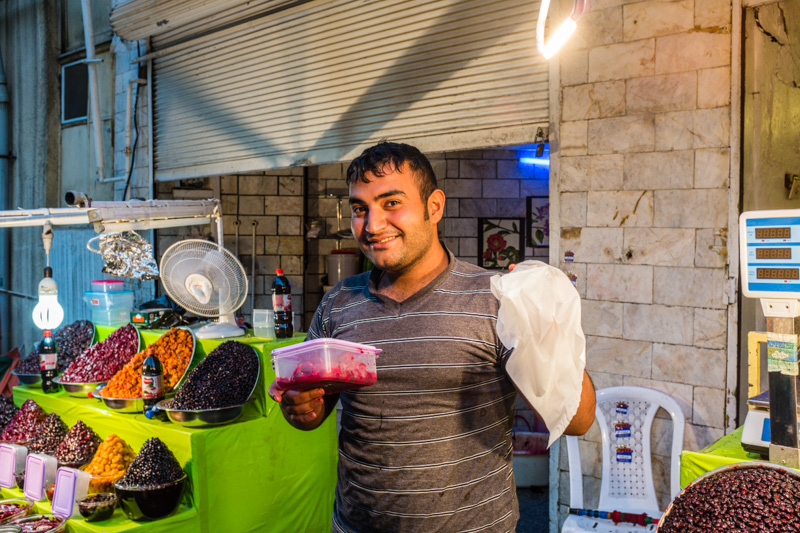
Fava Beans
Another popular snack is unshelled fava coated in saffron and salt.
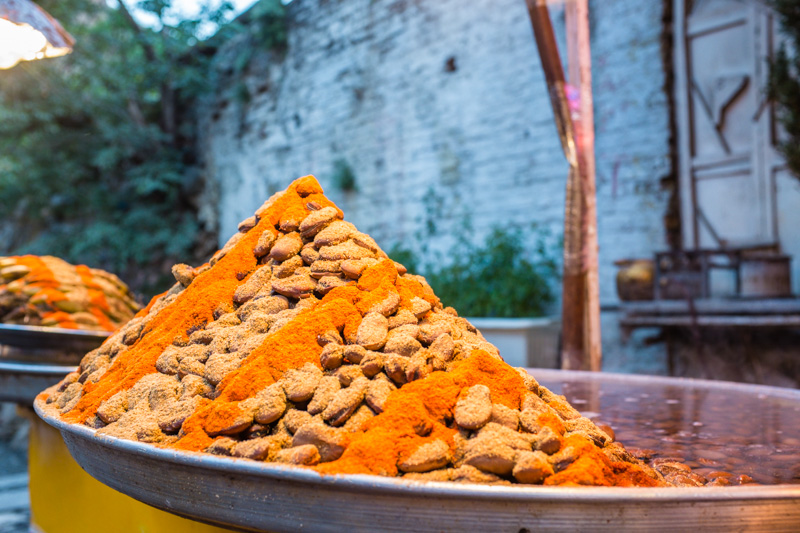
Roasted corn is also on offer as you walk up the mountain.
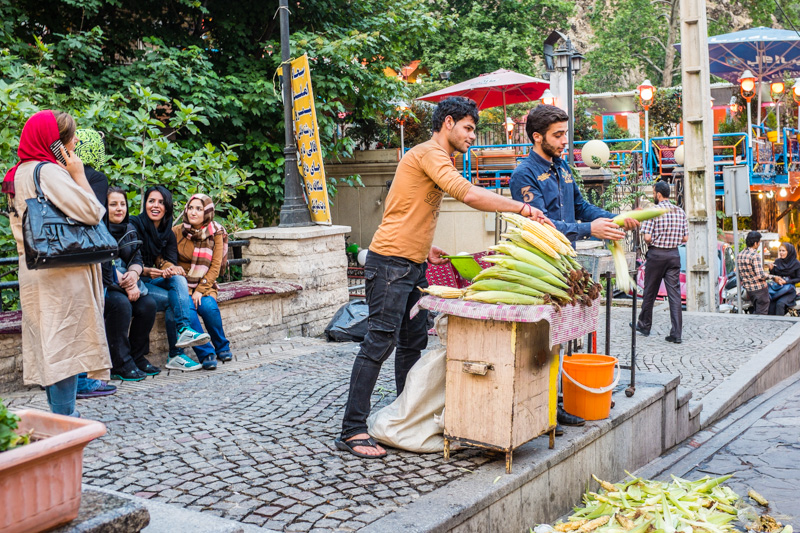
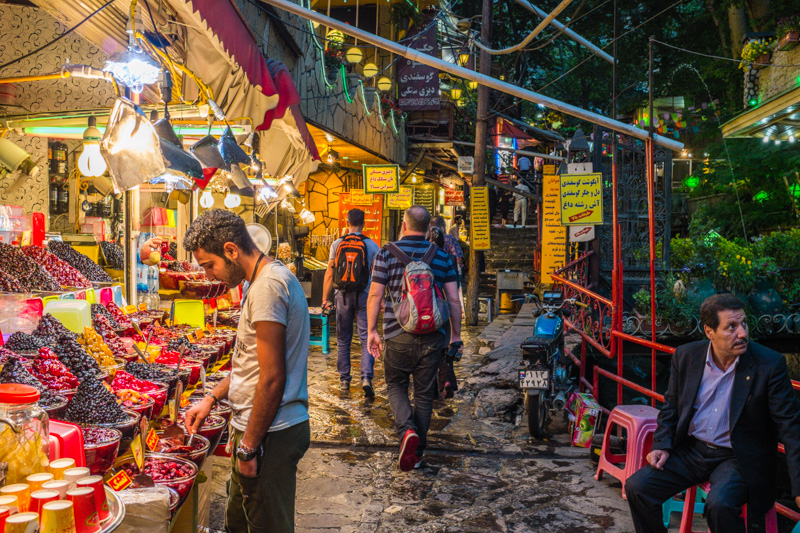
Tehran Grand Bazaar
Tehran Grand Bazaar is one of the oldest continuous shopping spots in the world and almost anything you could want to buy can be found here. That extends to food as well. One snack that we tried while visiting the bazaar was Bamiyeh, which is a crunchy syrup soaked long shaped doughnut which uses a yoghurt and starch based dough. This dish is not exclusive to Iran, and is actually common throughout the former Ottoman Empire countries.
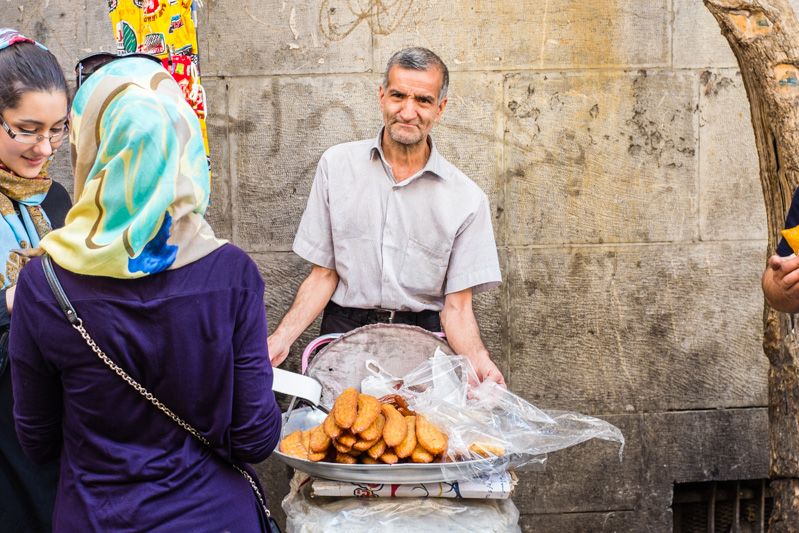
If you replaced the syrup with sugar you’d basically have churros.
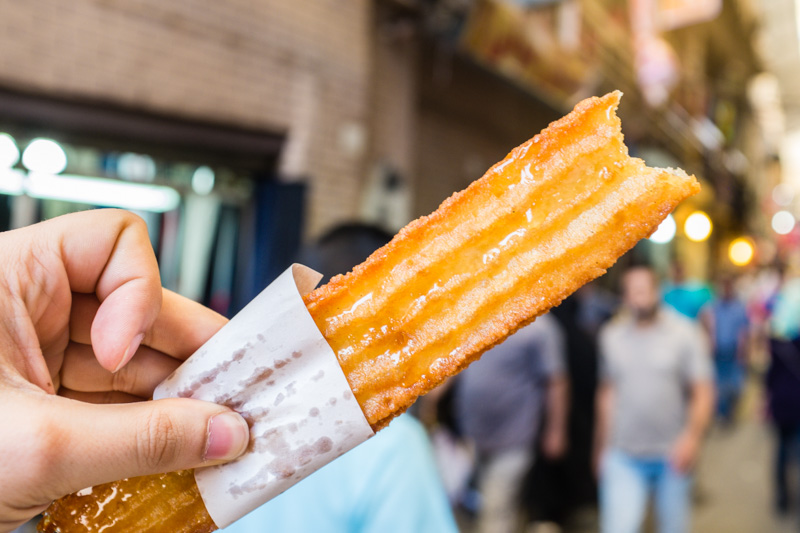
A variety of teas, herbs and spices can also be found in the Grand Bazaar.
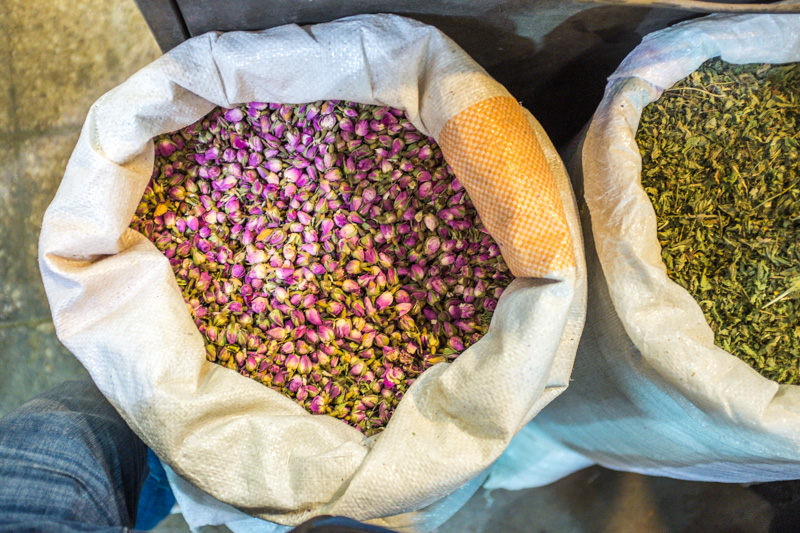
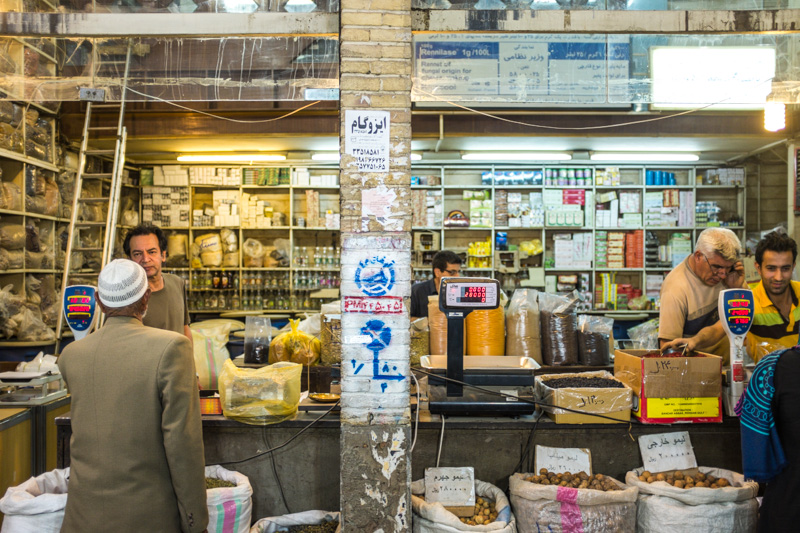
…and if you want a quick cuppa.
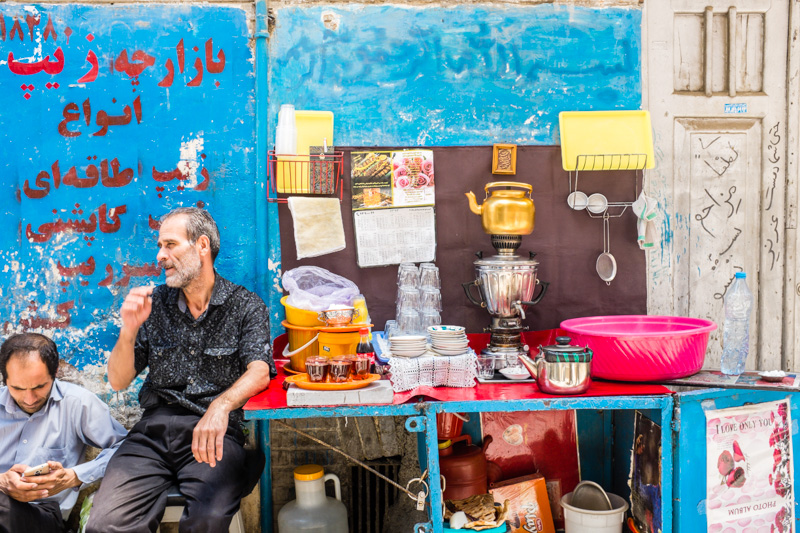
Tehran Grand Bazaar
Panzdah-e-Khordad Street
Tehran
Tajrish Bazaar
Located in North Tehran, Tajrish Bazaar is a lot less hectic than the Grand Bazaar and in many ways its more food focused. There were a lot of fresh fruit and vegetable vendors plying their trade both inside and outside of the market.
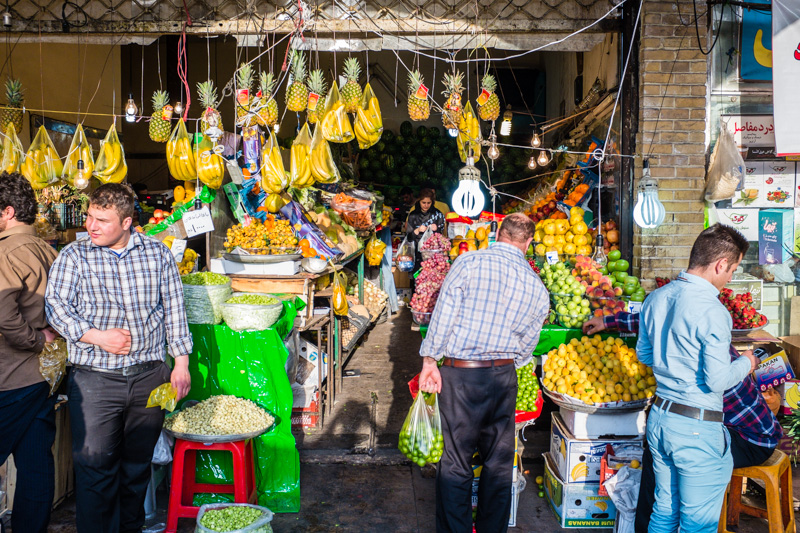
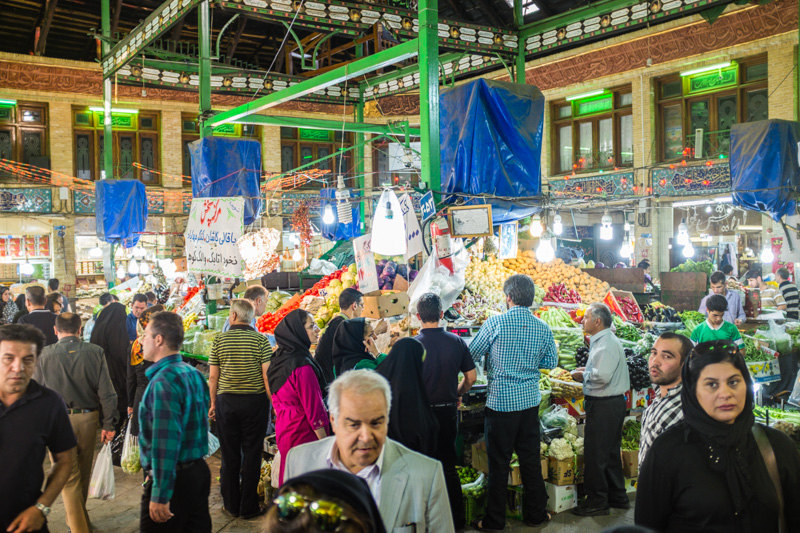
This friendly chap was working in a shop that had a great concept. A variety of fresh herbs were lined up at the front of the store. You pick the ones you want and there’s a machine that chops them up to the consistency you want and mixes them up for you. A much better alternative to dried, chopped herbs on the supermarket shelf I think!
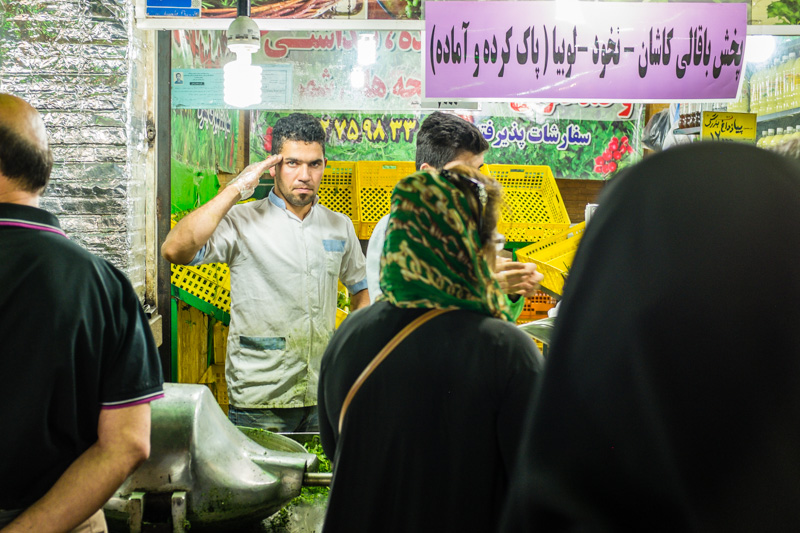
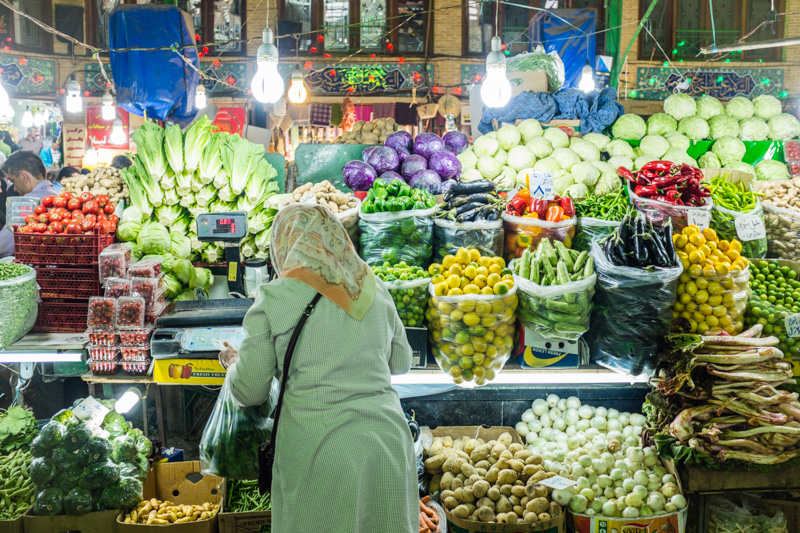
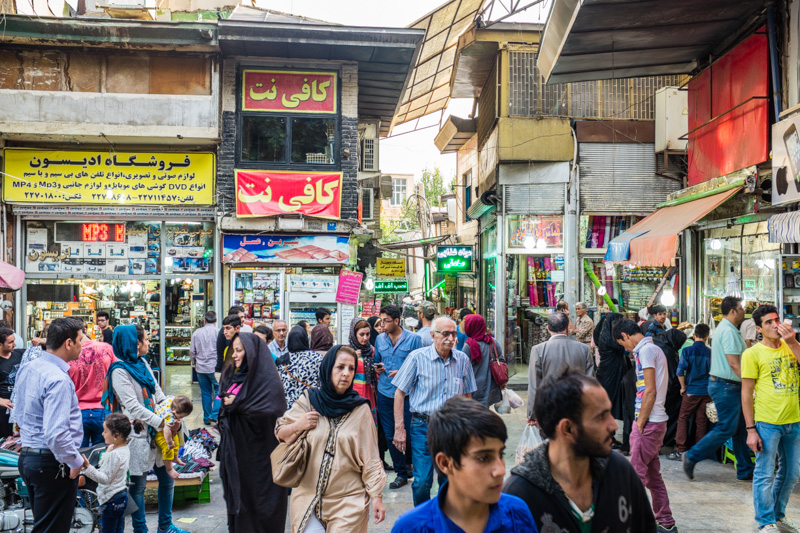
Tajrish Bazaar
Shahrdari Street (near Tajrish Metro Station)
Tehran
Ice Cream
Ice Cream is super popular in Iran and the streets of Tehran are full of ice cream vendors. There’s nothing particularly special about Rabinson which is pictured below, but is was one of a few places that we got some really tasty ice cream from and it was conveniently located for us.
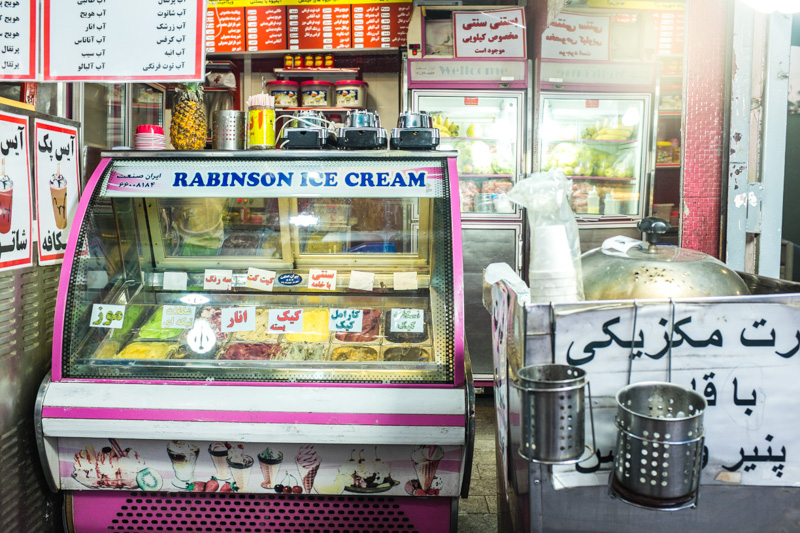
When this guy say my camera come out he made sure he brought his A game. How that thing didn’t fall over I don’t know.
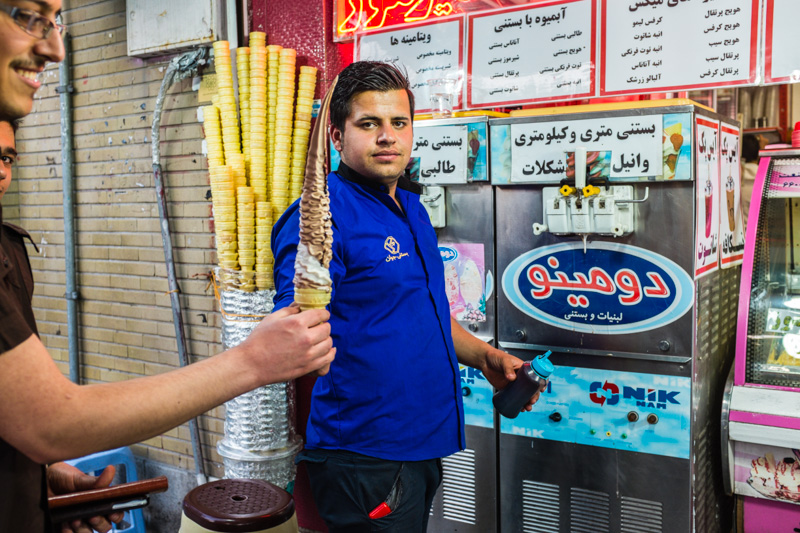
Regular gelato and soft serve is popular just like anywhere else in the world however something that’s not so common elsewhere but popular in Iran is Ab-Haveej Bastani. It’s a Persian carrot juice and vanilla ice cream float that became popular in Iran in the 1960s. The combination of freshly squeezed carrot juice and ice cream might seem odd but trust me, it works. The best places use little pellets of frozen cream as well.
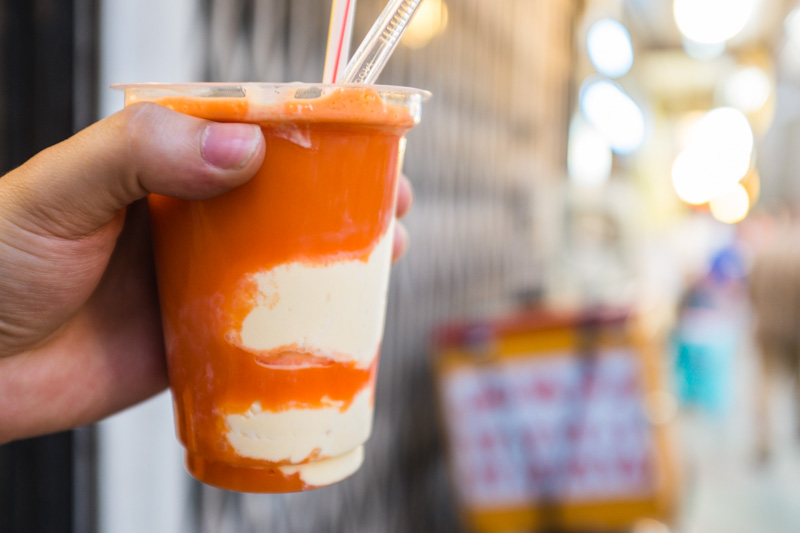
Rabinson Ice Cream
Valiasr Street, Just up from intersection with Aramesh Street
Tehran
Fast Food
Western-style fast food is much more common in Iran than I had anticipated. Burgers, fried chicken, pizza, whatever – you want it, you can find it. For reasons political and otherwise you won’t find the ubiqutous Western chains in Iran but where there’s a will there’s a way and there are a lot of independent shops doing their own take. The place below, for example, is not Pizza Hut.
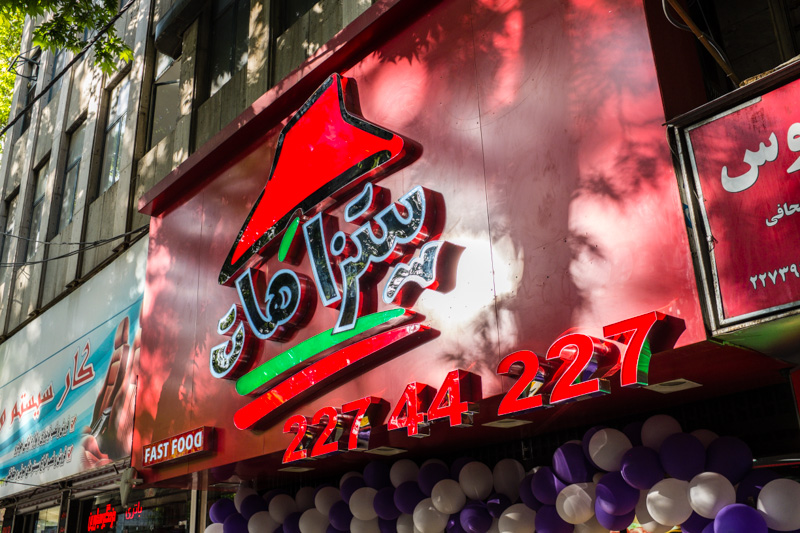
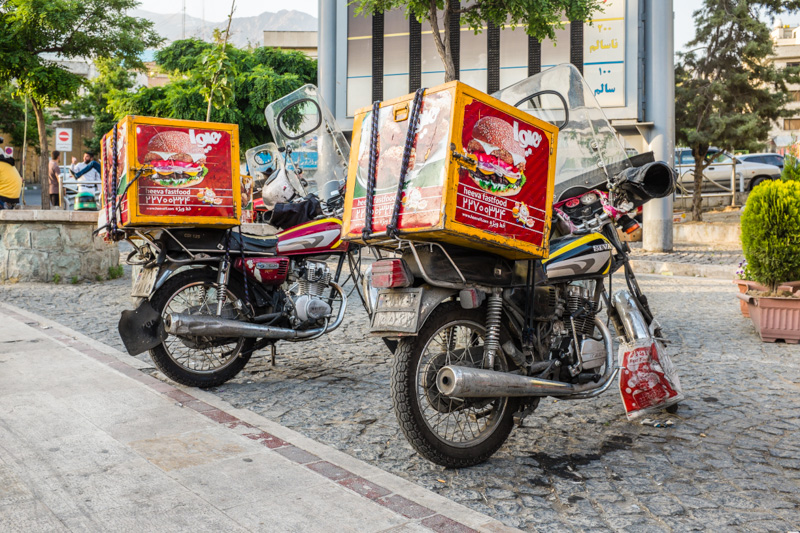
Tabiat Bridge
Tabiat (Nature) Bridge opened in late 2014 and is one of Tehran’s architectural masterpieces. It’s a real focal point that connect 2 parks by spanning a motorway and offers amazing views of Tehran and a variety of family friendly activities for those who visit. I’ll be writing about it in due course, however its relevance here is that there’s a food hall built into the bridge itself that offers a good example of some of the common takeaway items that can be found in Tehran.
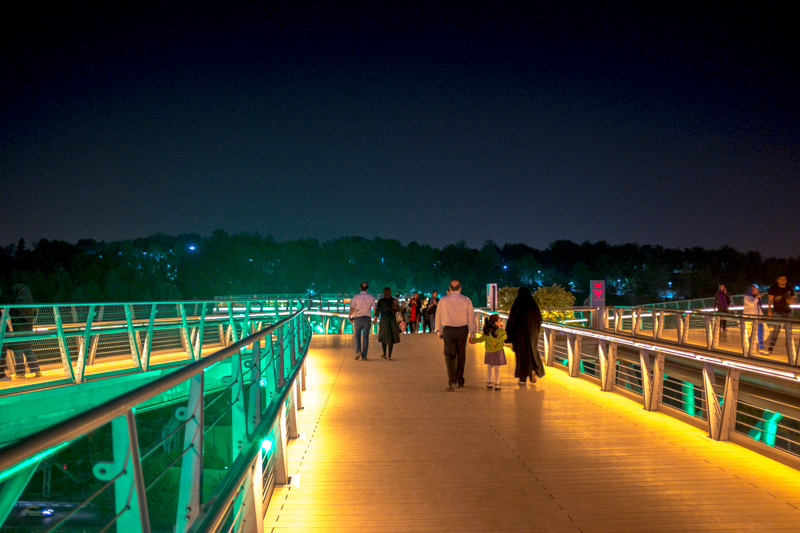
Who said you can’t get good coffee in Tehran? Espresso, V60 filter, cold drip or anything else you can think of, can be found here.
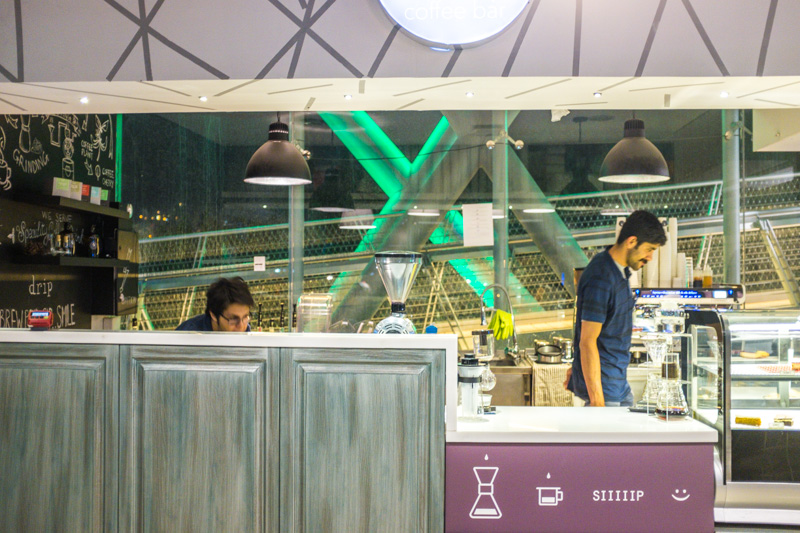
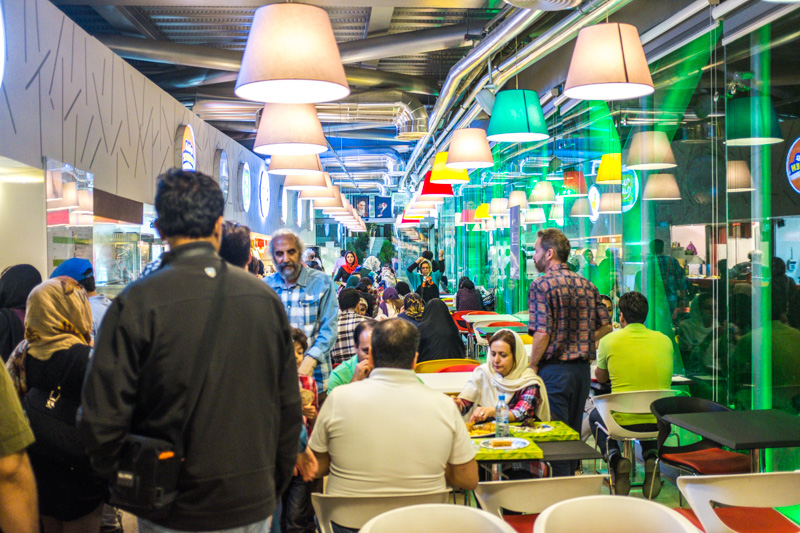
If you ever tire of kebabs there’s always fried chicken.
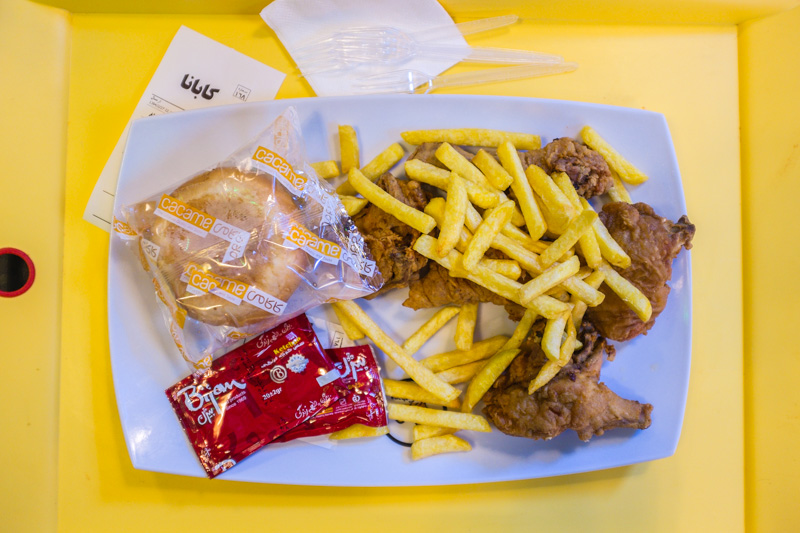
Once you get hooked on carrot juice ice cream you’ll wonder how you ever survived without it.
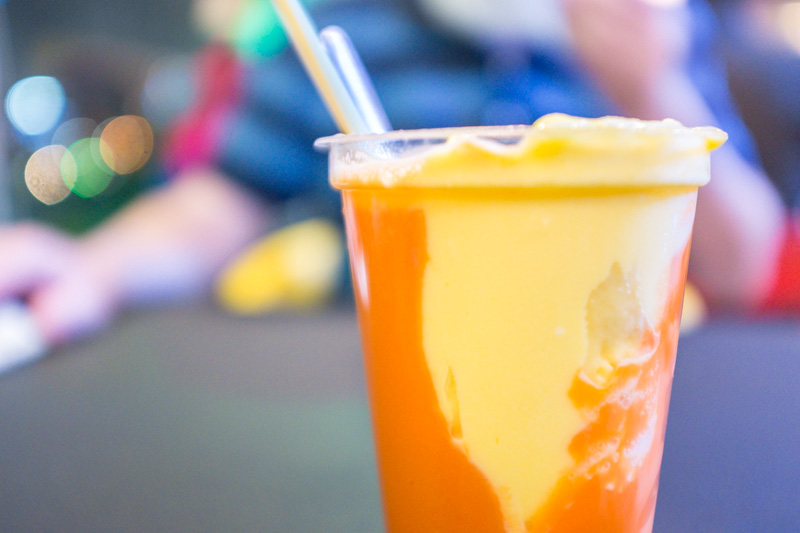
In Iran, ketchup on pizza is a thing. I don’t get it at all, but everyone does it over here. Tell an Iranian who hasn’t travelled outside of Iran that most places around the world don’t serve ketchup on pizza and they will look at you like you’re talking nonsense. My pizza was late as my order got mixed up so they guy serving me wrote a P for Paul as he apologised. We were going to try a burger too but unfortunately it was quite late and the burger shop had shut for the night.
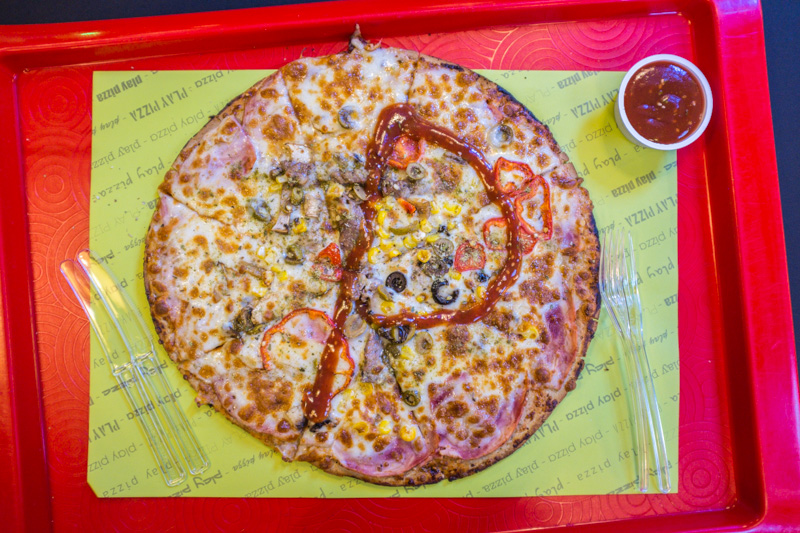
Assorted Stores
Tabiat Bridge
Tehran
Cakes, Sweets & Nuts
Cakes, sweets and nuts. All very common throughout Iran and it’s easy to find shops that sell all 3 in the same place.
Tavazo
Tavazo have been in the business of selling nuts and sweet for over 100 years and thankfully they were conveniently located near us. You don’t need to make a special visit to Tavazo if you’re not in the area as there are a lot of shops like this in Tehran, but the photos will give you an idea about the sort of thing to look out for.
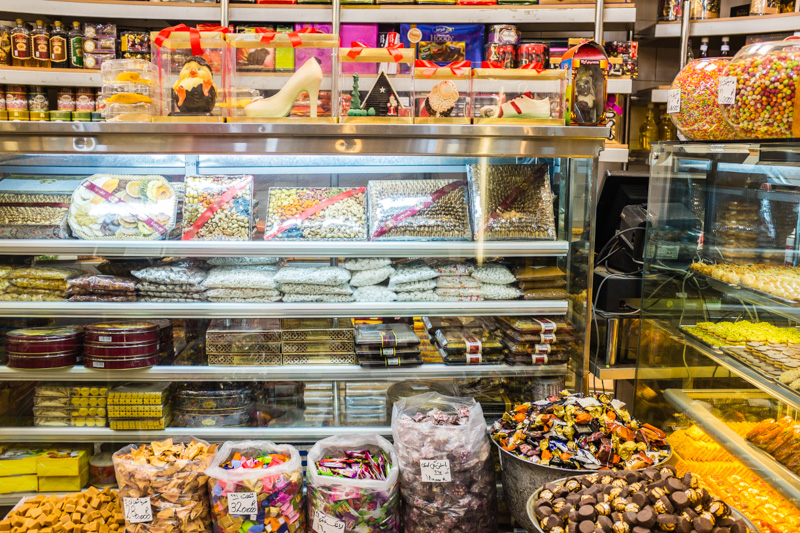
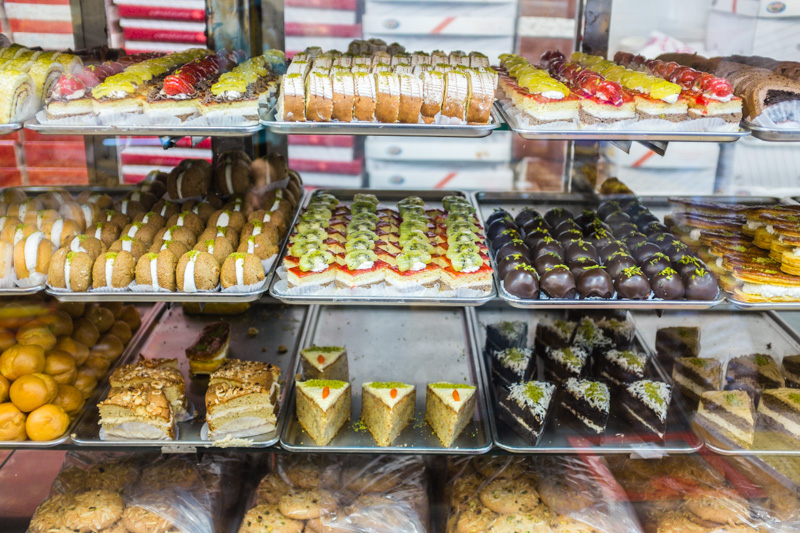
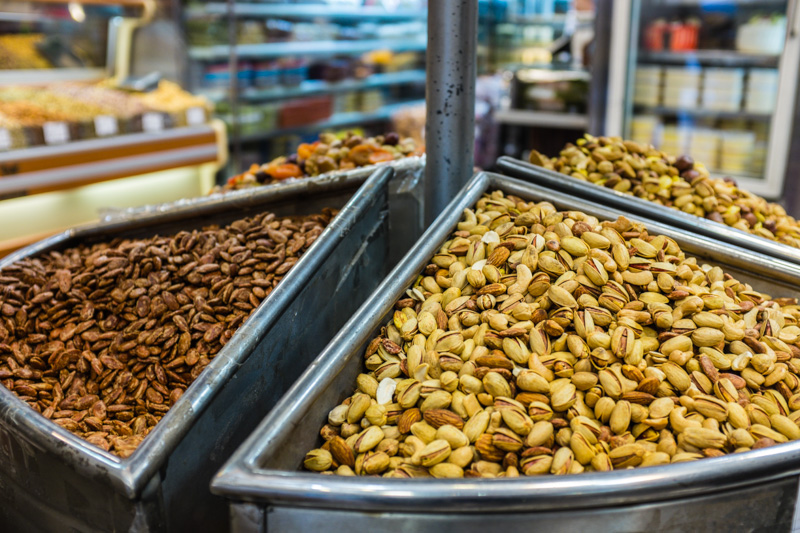
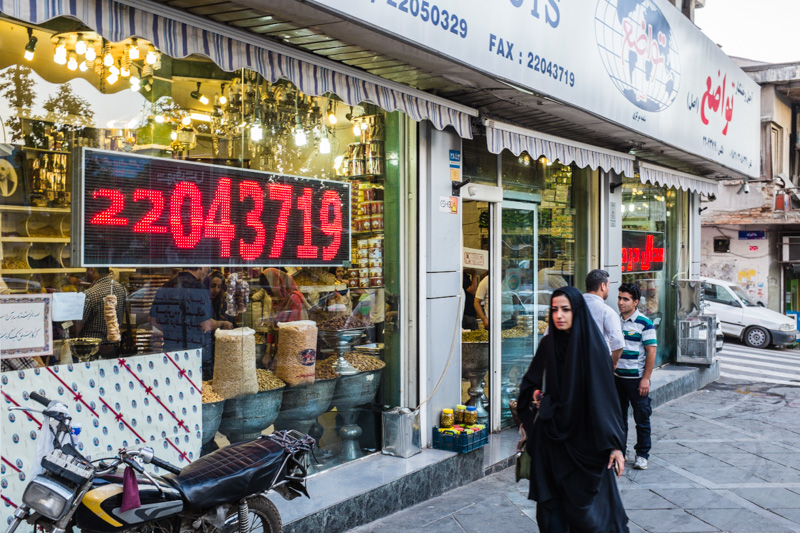
Tavazo
1664 Shariati Street (Before Sadr Bridge)
Tehran
Name Unknown
This shop didn’t have an English name and sold a variety of cakes and biscuits. We bought a variety box and were particularly fond of the jam filled ones that you can see in the first tray on the second shelf. The wafers (not pictured) were also really tasty. As with Tavazo, you won’t have trouble finding shops like this in Tehran so don’t worry too much about trying to seek this particular one out.
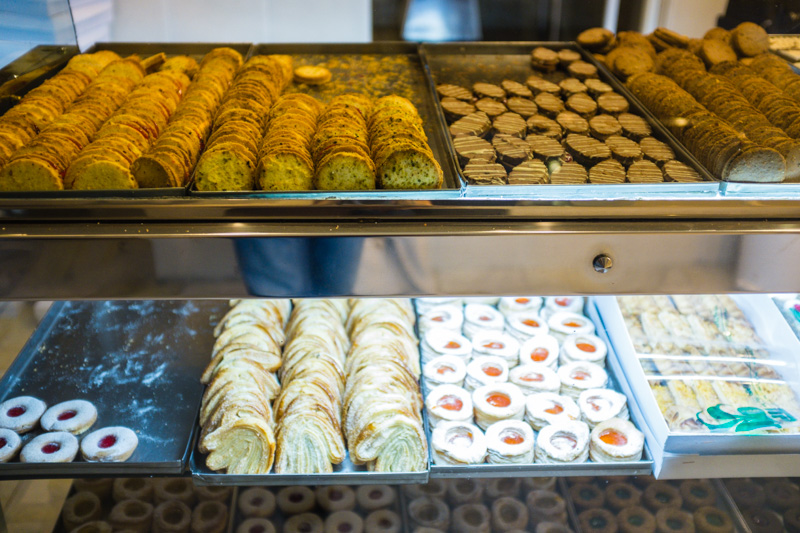
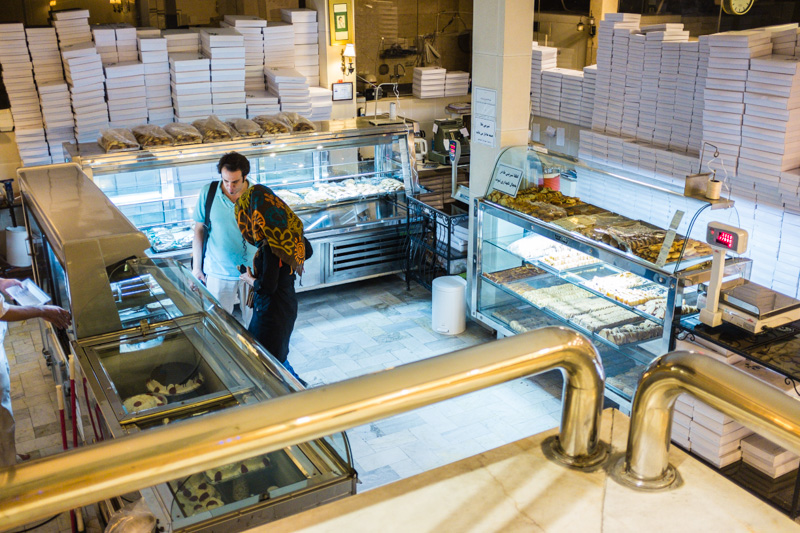
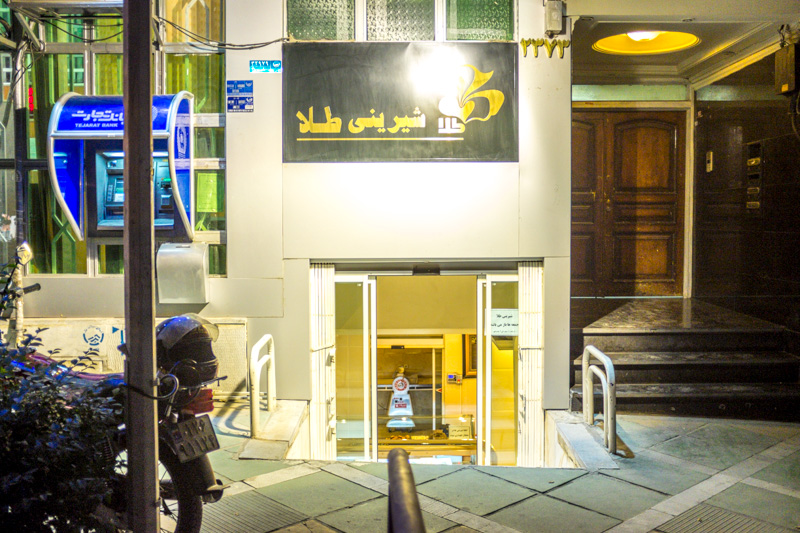
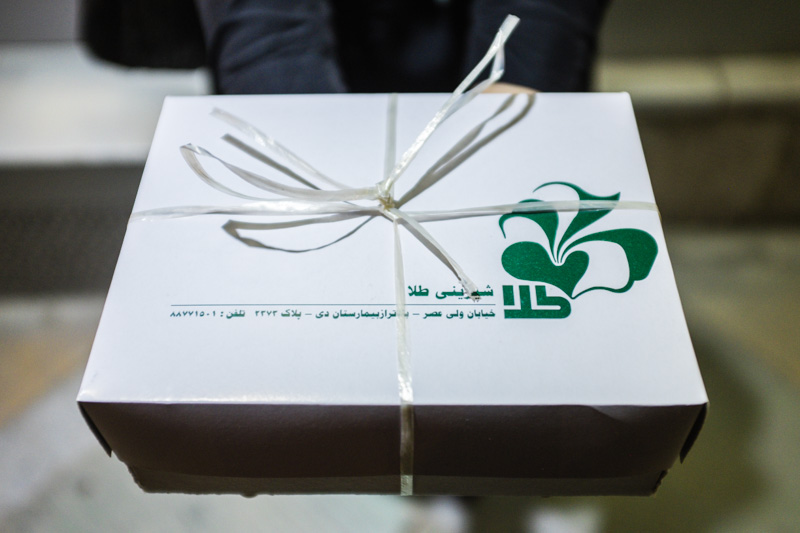
Name Unknown
Valiasr Street, Just up from intersection with Falag Dead End
Tehran
Ferdowsi Grand Hotel
Back to the Ferdowsi Grand Hotel, and to the right of the main entrance is a well regarded cake shop selling a variety of goodies for you to sample.
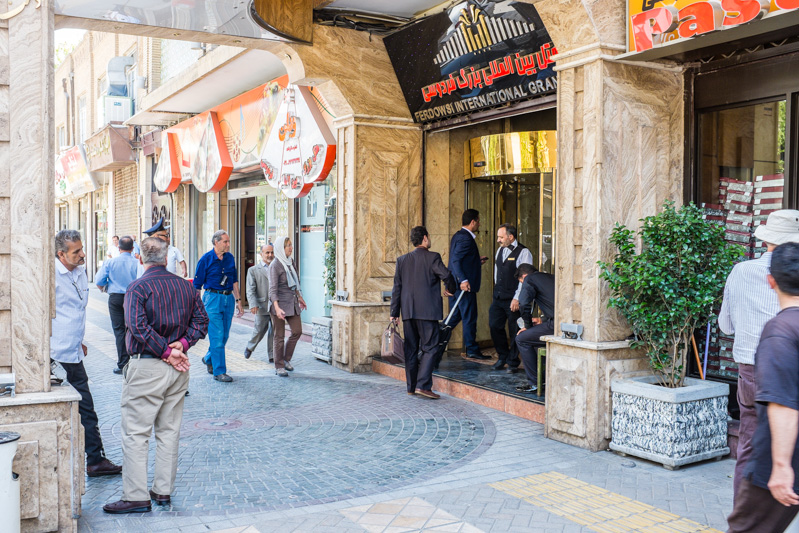
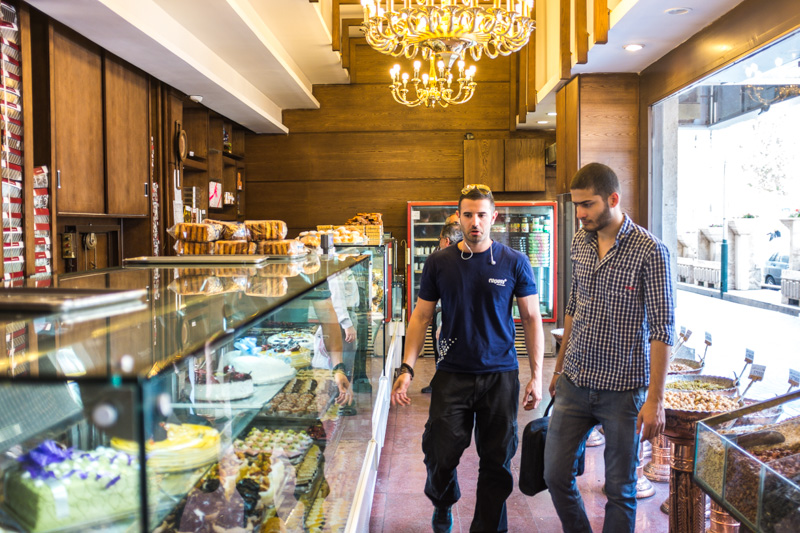
Ferdowsi Grand Hotel Cake Shop
20 Kushk e-Mesri Street
Tehran
Bread
Bread is a staple in Iran. The most common form of bread is by far the thin, unleavened pita style what flour flatbread, which differs by region but is basically the same throughout the country. The 4 most common types of bread in Iran are:
- tāftūn (taftān)
- lavāš (nān-e tīrī)
- nān-e sangak
- nān-e barbarī
Hole in the wall bakeries like the one pictured below operate seemingly all day, kneading dough, rolling it out into thin disks and baking it quickly in a wood fired oven. Most of these bakeries seem to have a permanent line of people waiting to buy their daily bread, before moving it to a cooling rack at the front of the store where it can be cut to a more manageable size, put in a bag and taken away.
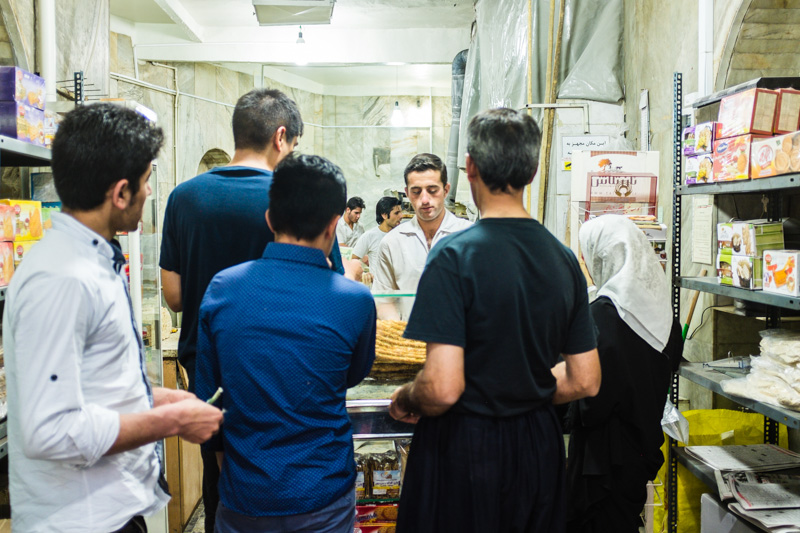
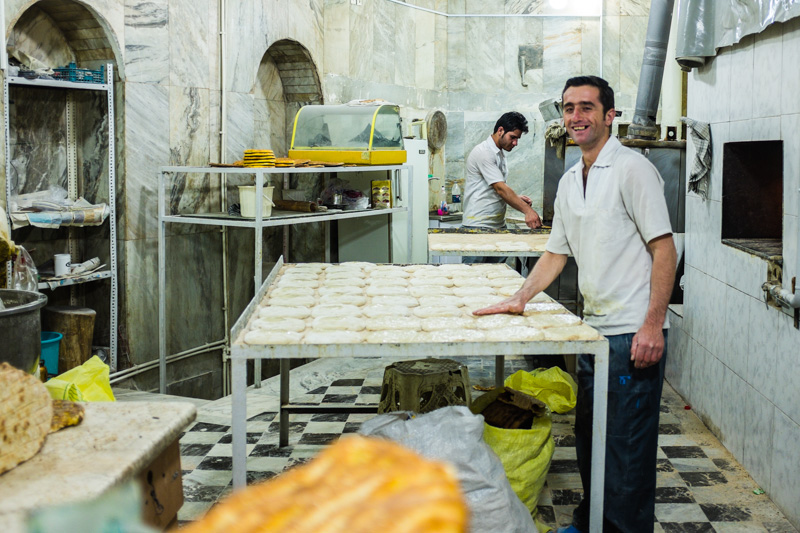
The bread we got from this bakery was barbari bread, which is one of the thickest flat breads. The quick bake in the Tandoor oven means that the inside is soft and pillow-like while the outside is light and crunch. A real delight which needs to be eaten freshly baked to truly appreciate.
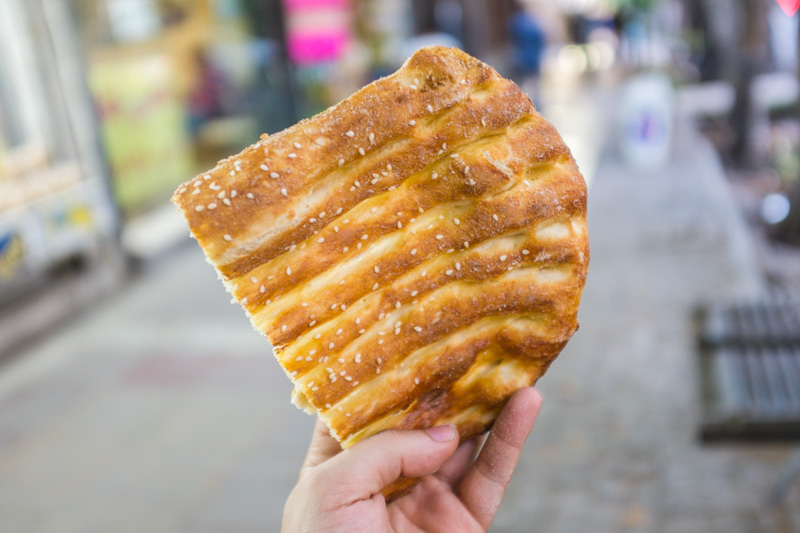
You don’t need to seek this bakery out in particular, as there are loads of them throughout the city – just look for the lines and people walking from the front with big piles of bread stacked in their hands!
Name Unknown
Near corner of Behrouz Street & Behrouz Alley
Tehran
Further down the street we found another bakery which along with baking bread, also sold a variety of baked goods including Persian doughnuts.
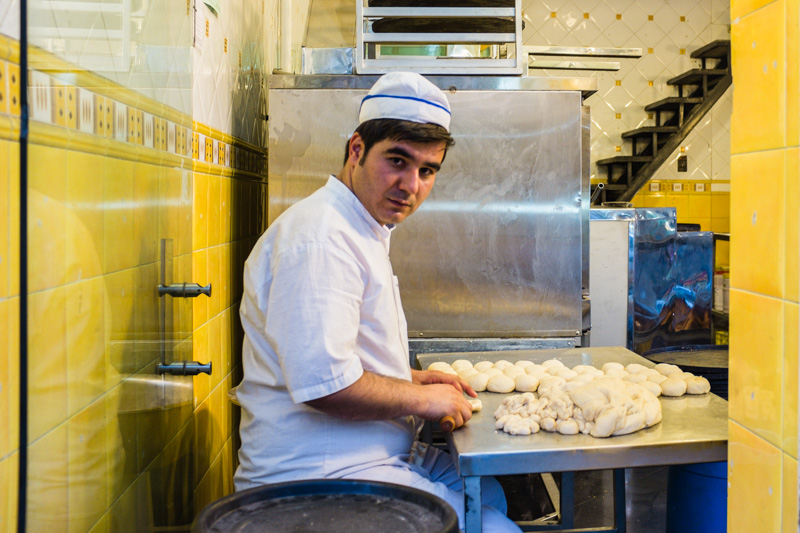
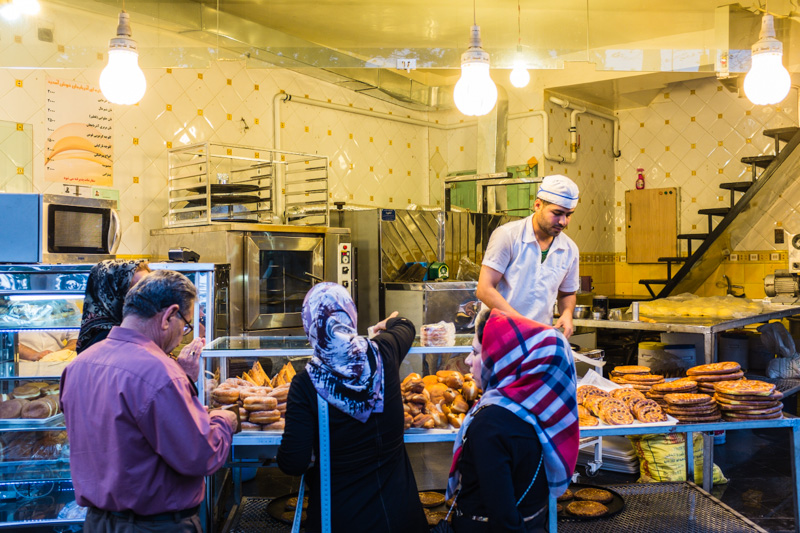
Persian doughnuts are different to what we’re used to in the West. They look the same (albeit larger), and are still fried and crispy on the outside however inside they have a texture more akin to bread. They are often covered with a sugar glaze or sprinkled with sugar and cinnamon, like the ones below.
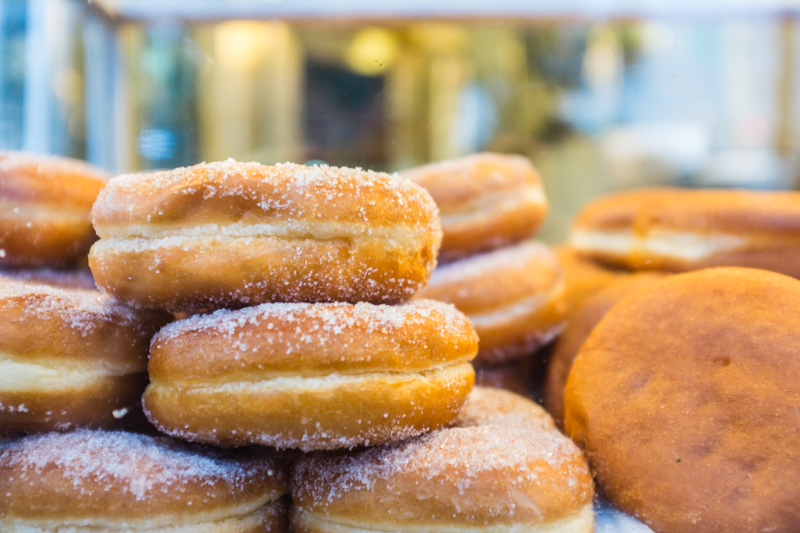
As with many of the other foods mentioned on this list, you don’t need to seek out this place in particular, but here’s the address if you’re in the area.
Name Unknown
Valiasr Street, Just up from intersection with Aramesh Street
Tehran
Other
There are several other delicacies which you can try in Tehran. We didn’t try everything in Tehran as we spread out our eating over several cities across 15 days. Delicacies you may come across during your time in Tehran that are worth trying include:
- Pashmak (Sugar & sesame seed Persian fairy floss/cotton candy)
- Gaz (Persian nougat)
- Faloodeh (Slightly frozen sugar and rosewater syrup and thin corn starch vermicelli noodles)
- Abgoosht, or Dizi (lamb, chickpeas, white beans, onion, potatoes, tomatoes, turmeric, and dried lime that have been cooked into a stew then mashed and served with the broth)
You can read more about these other foods, including additional food not commonly found in Tehran in my Shiraz Food Guide and Esfahan Food Guide.
If you’re from Tehran or have visited and have got any tips of your own I’d love to hear about them in the comments section below.




